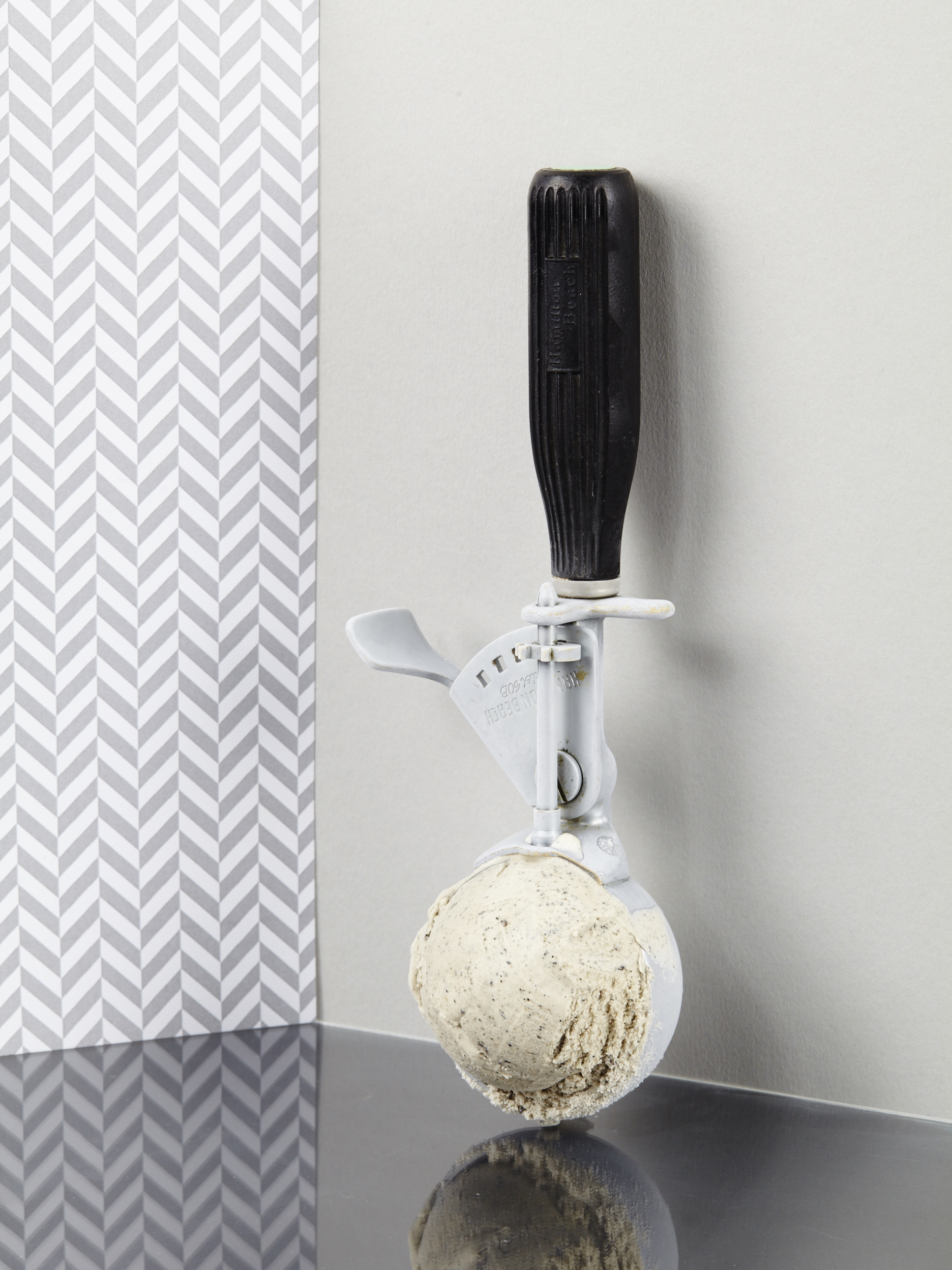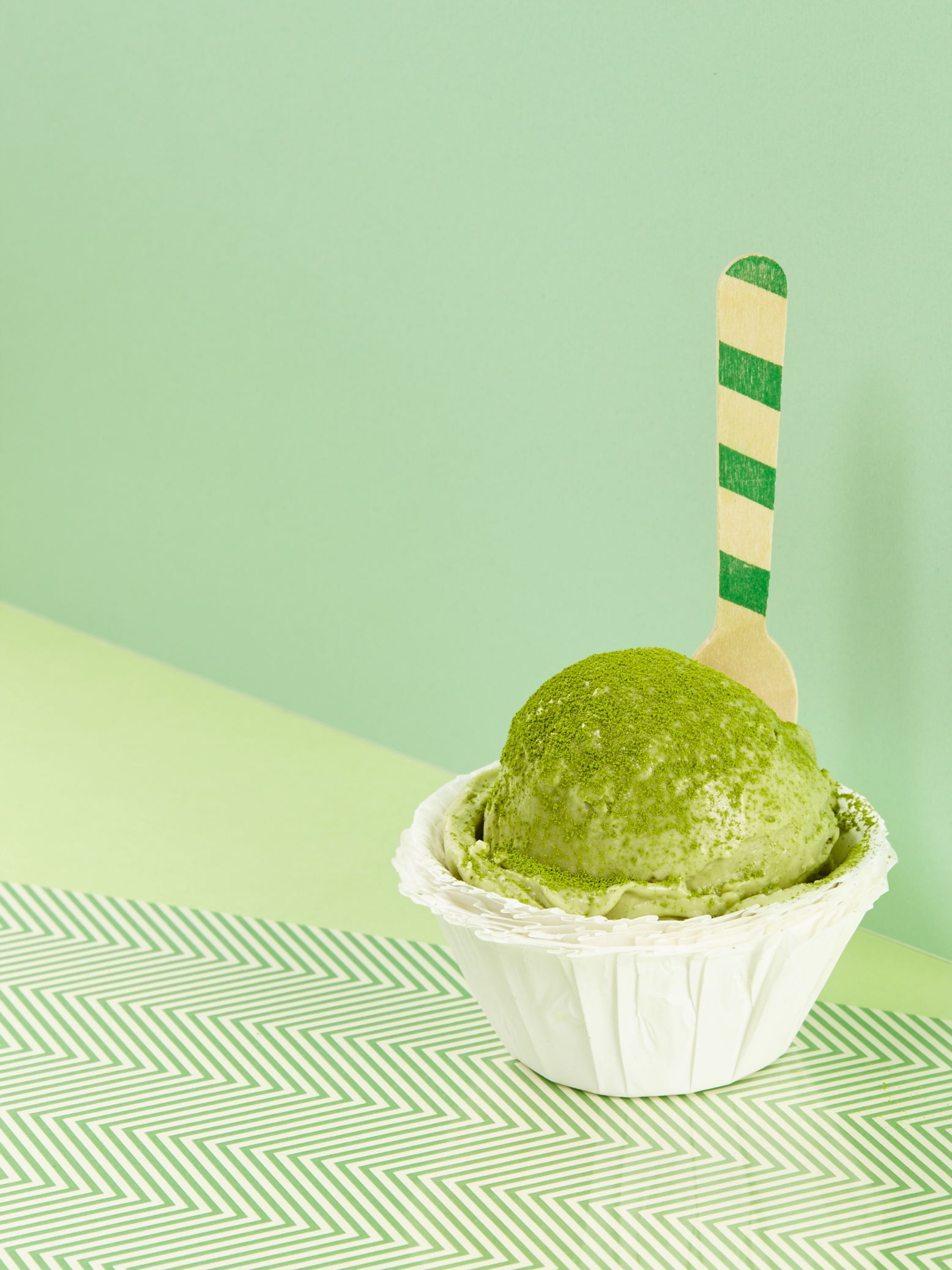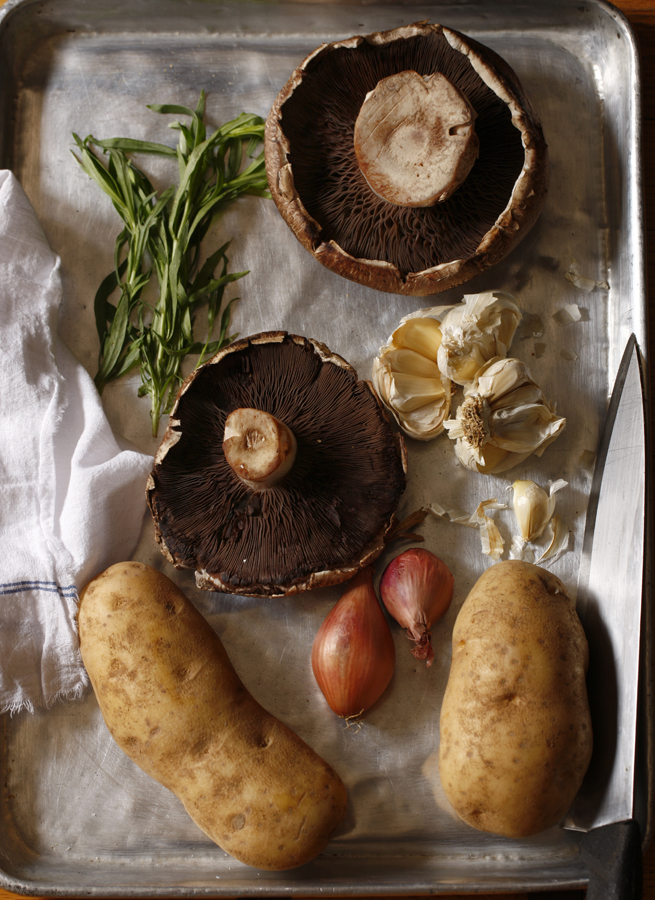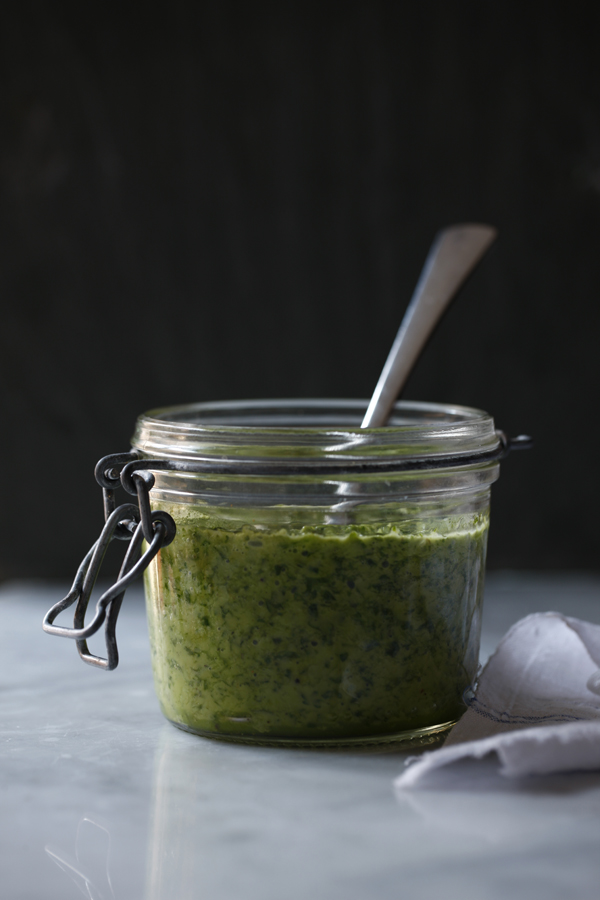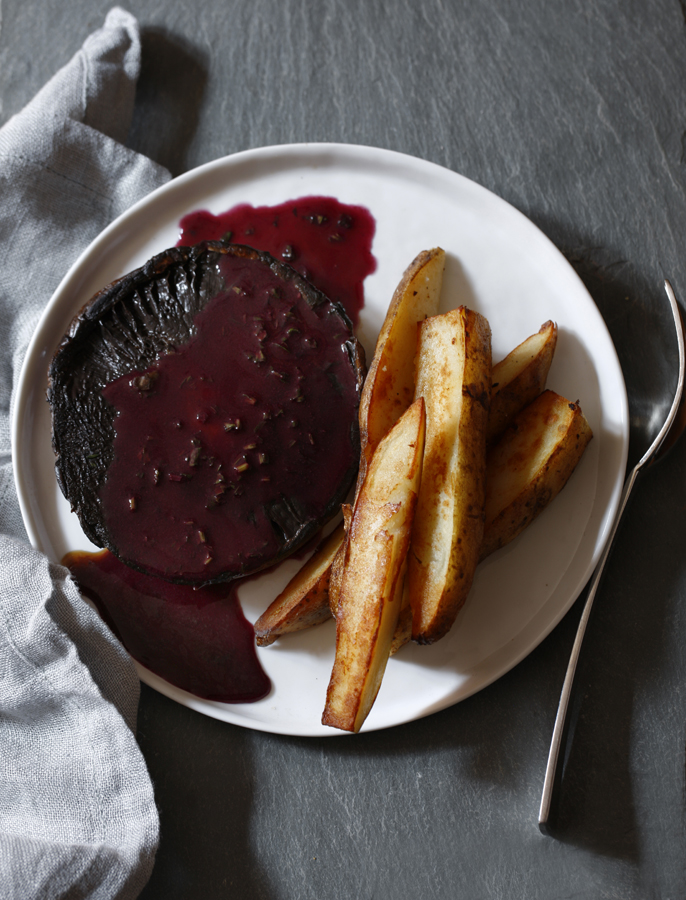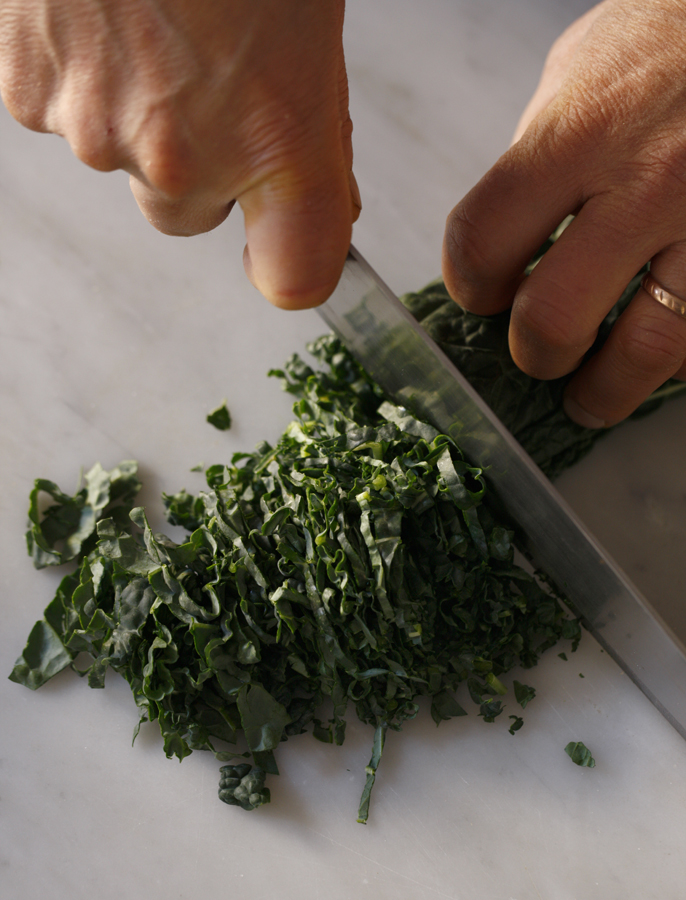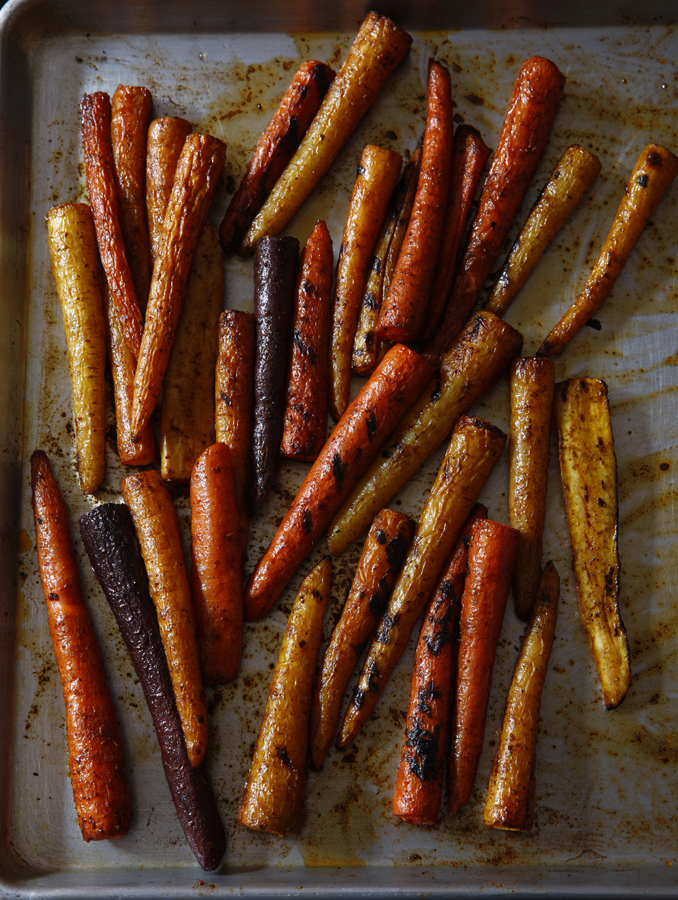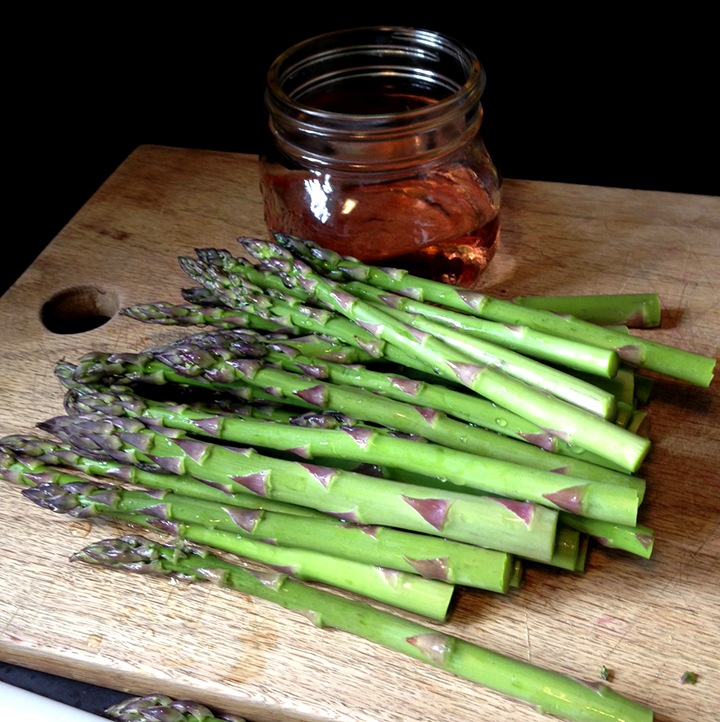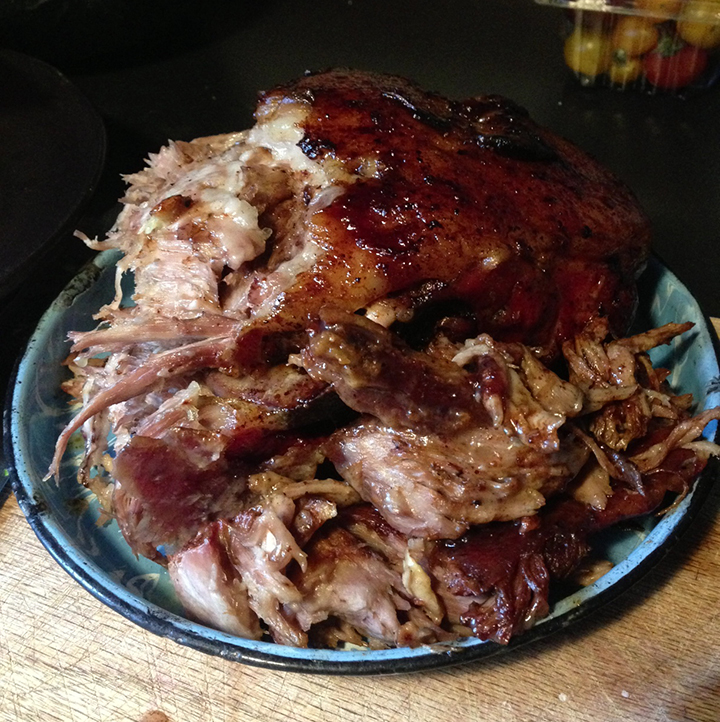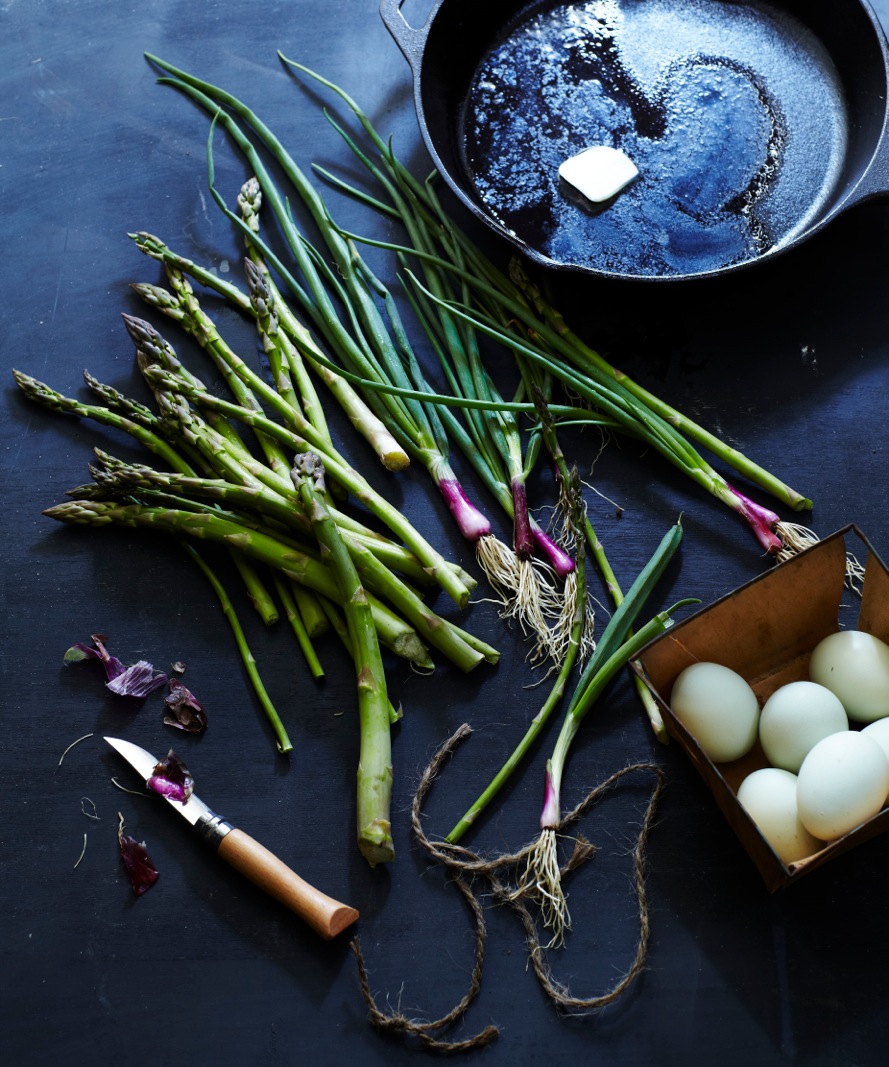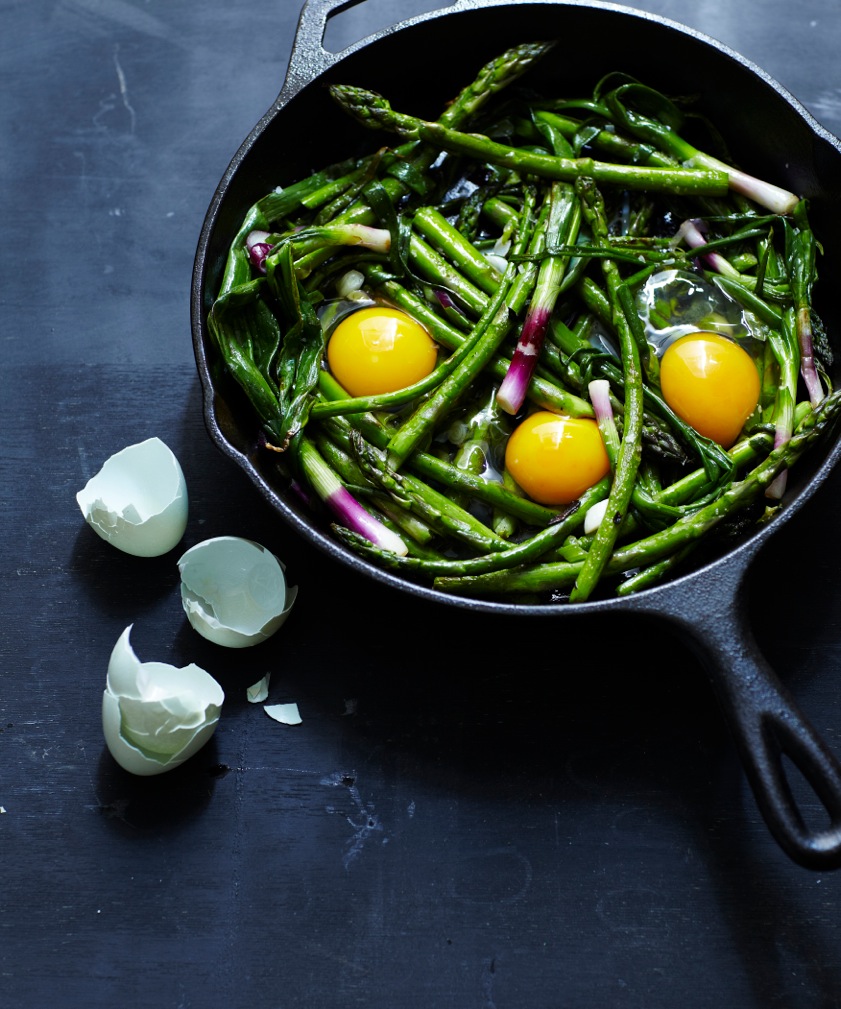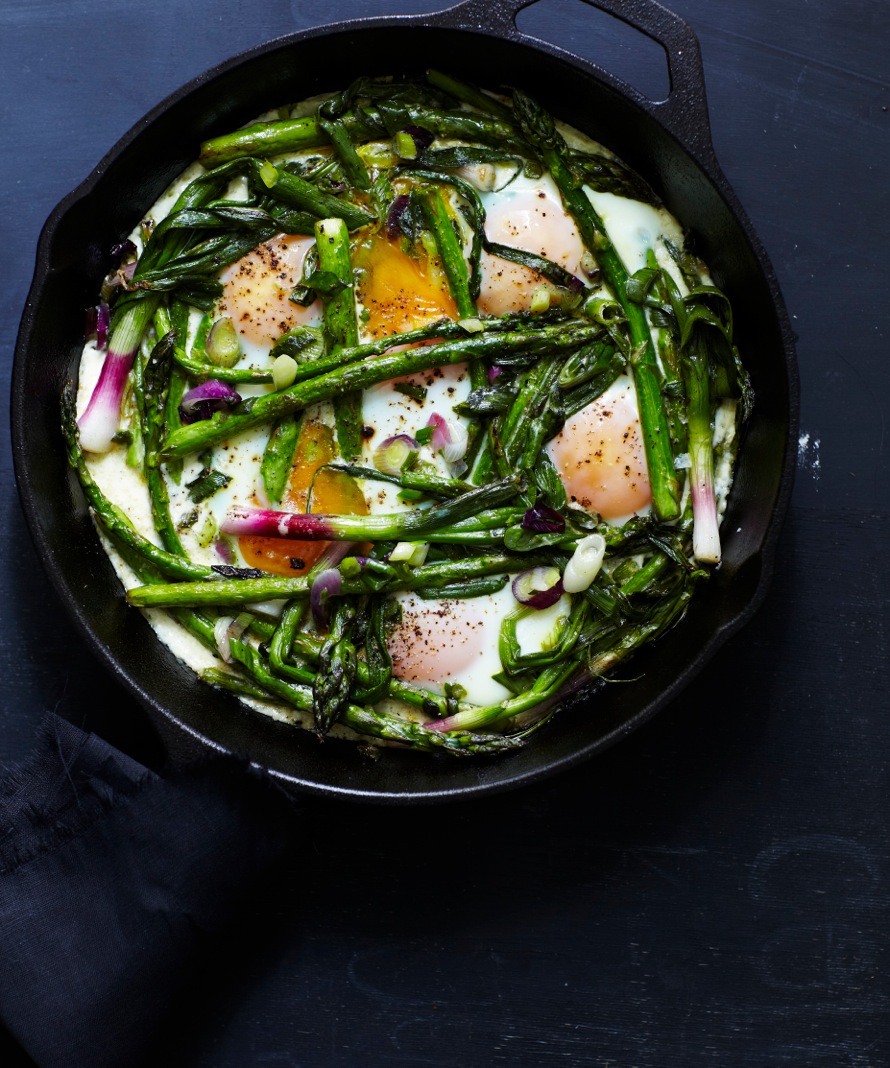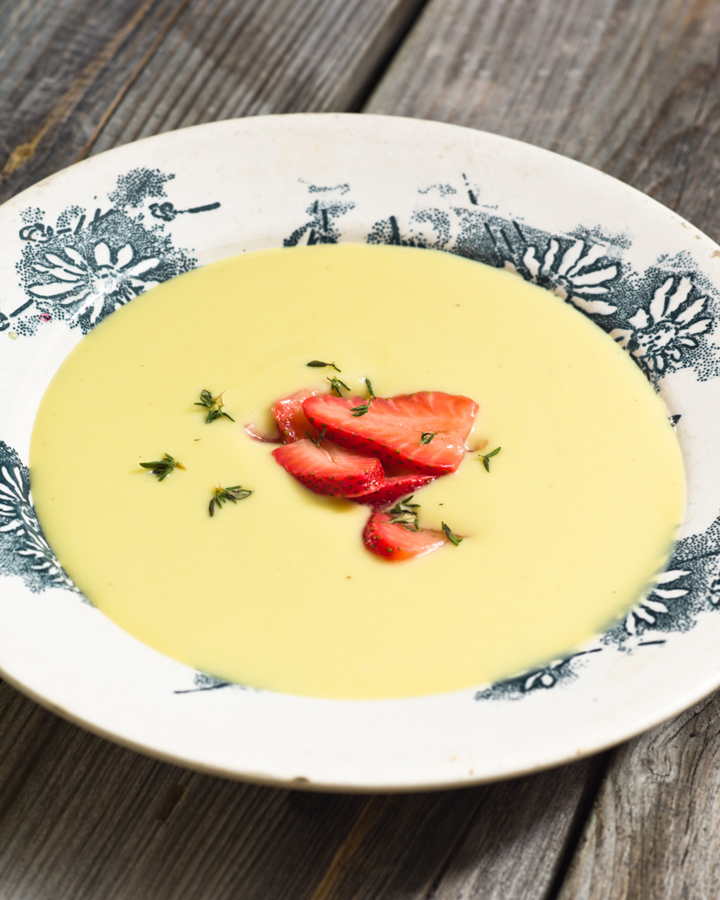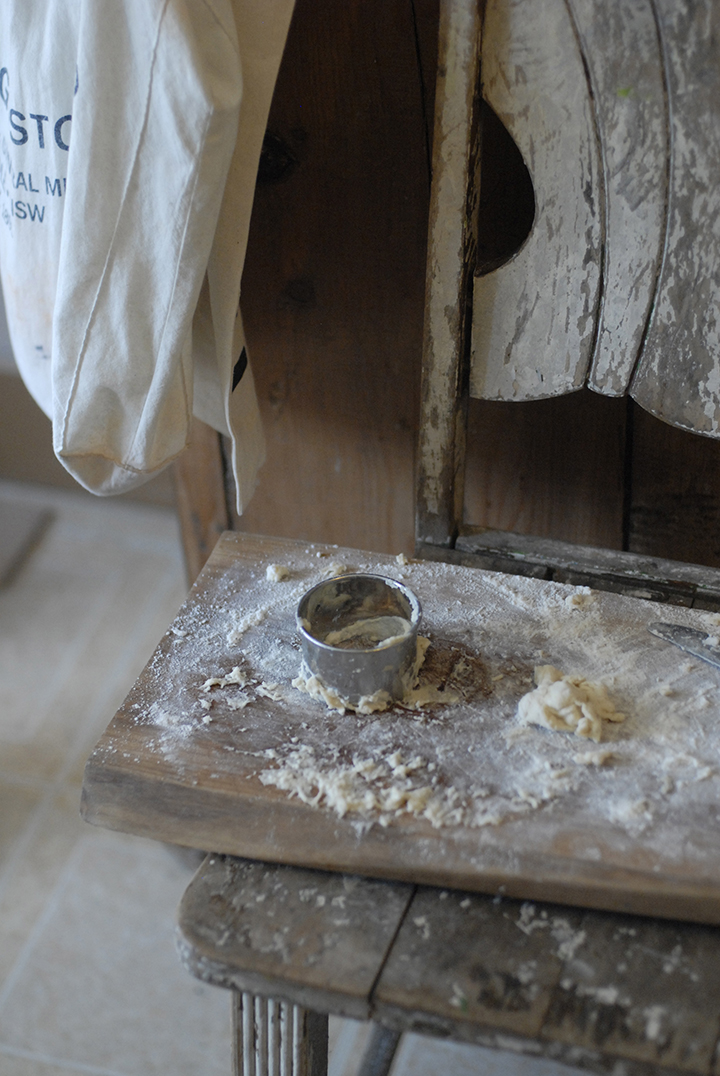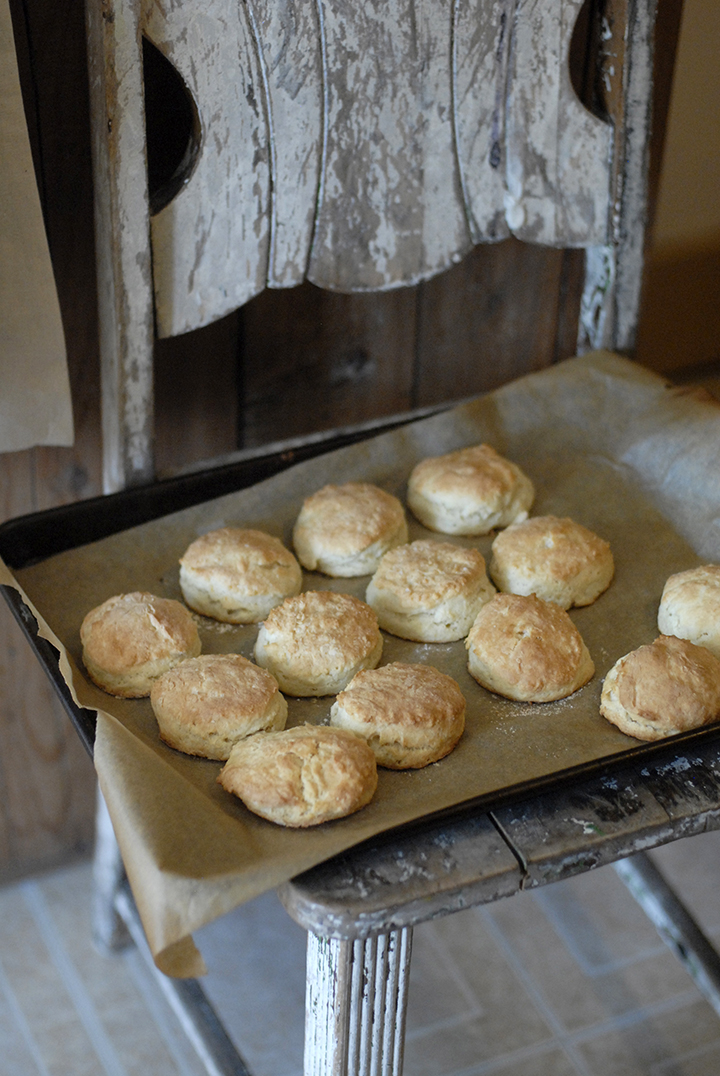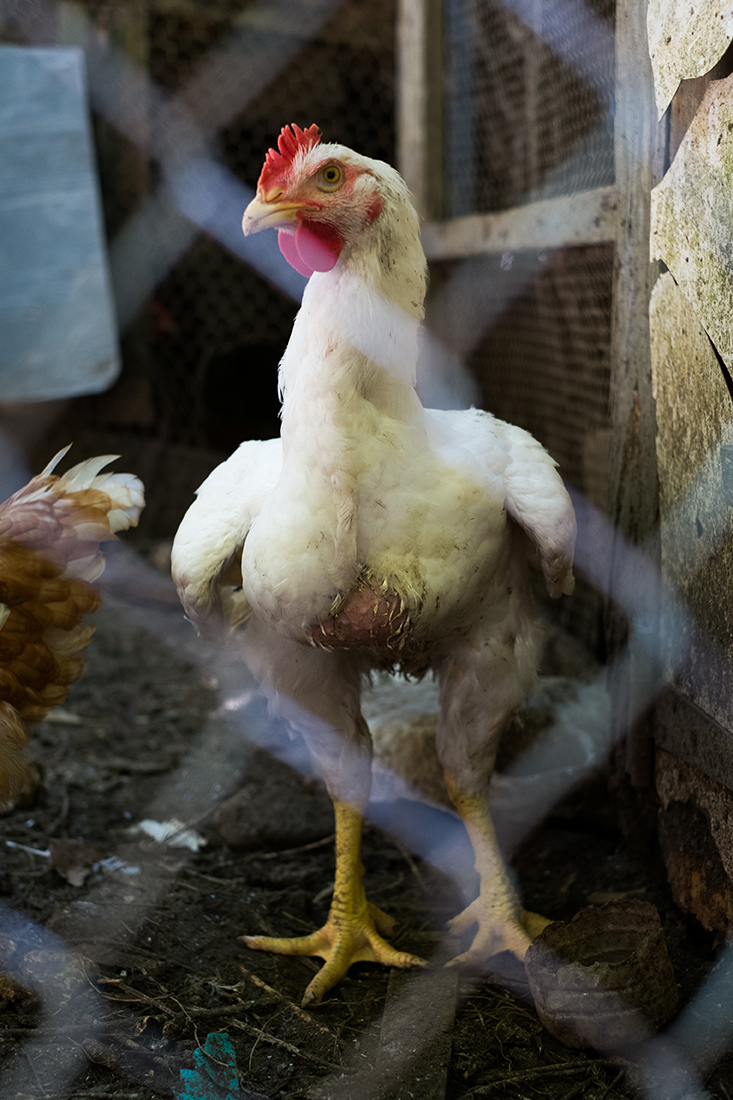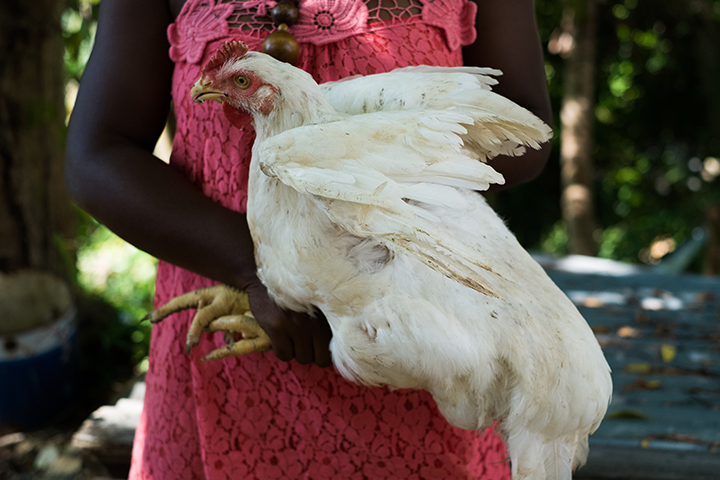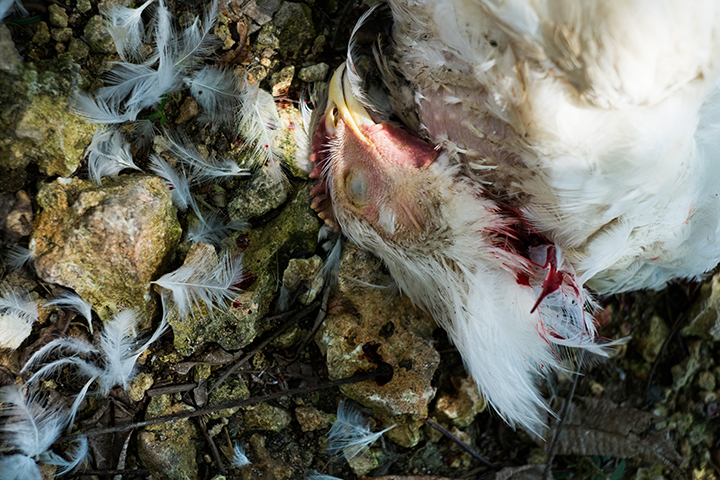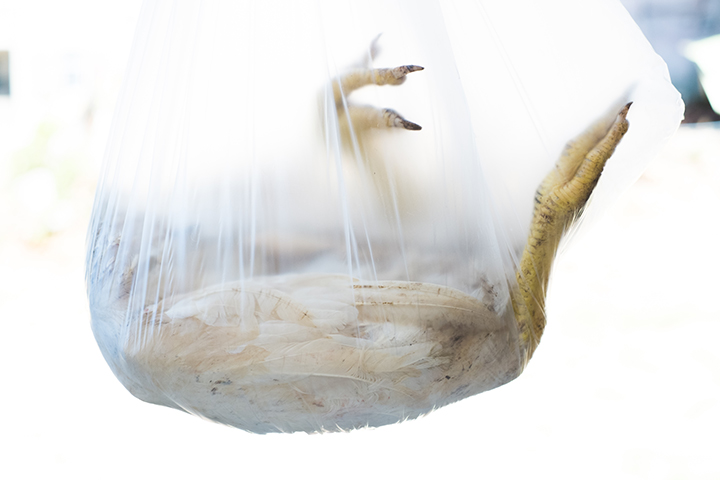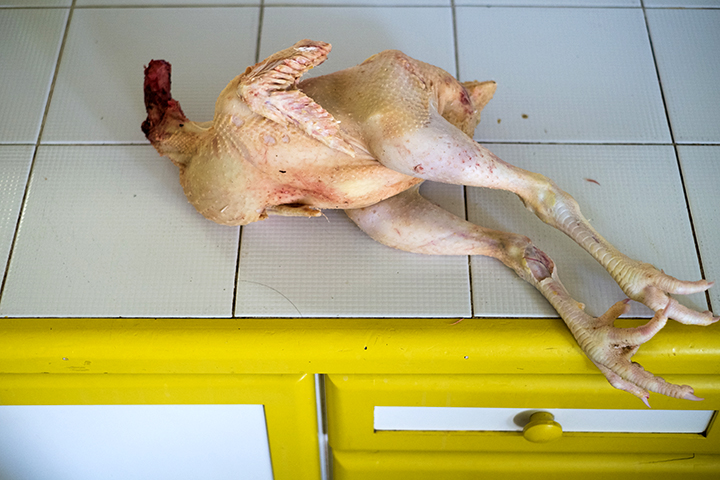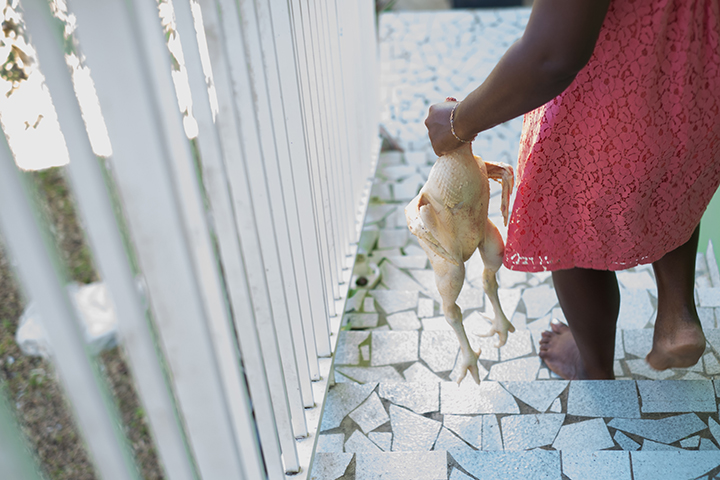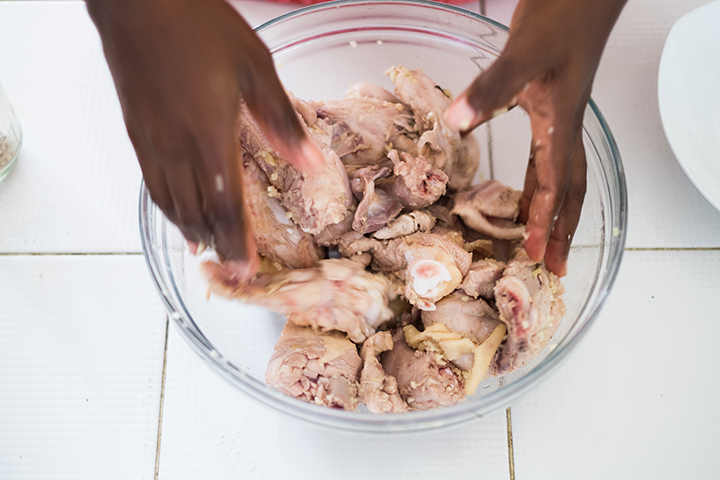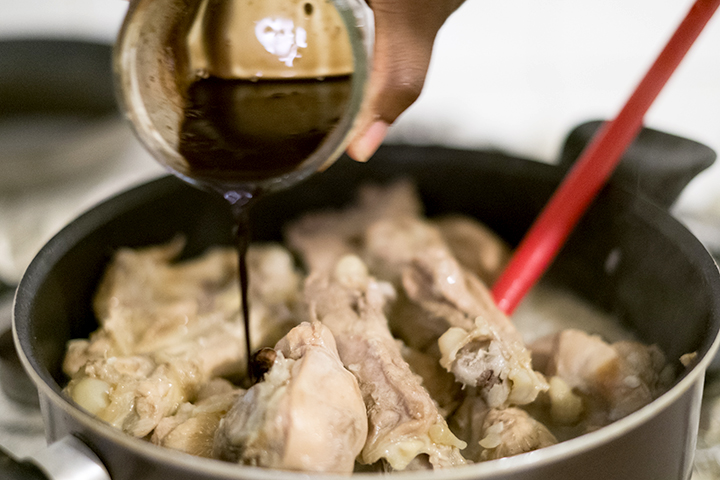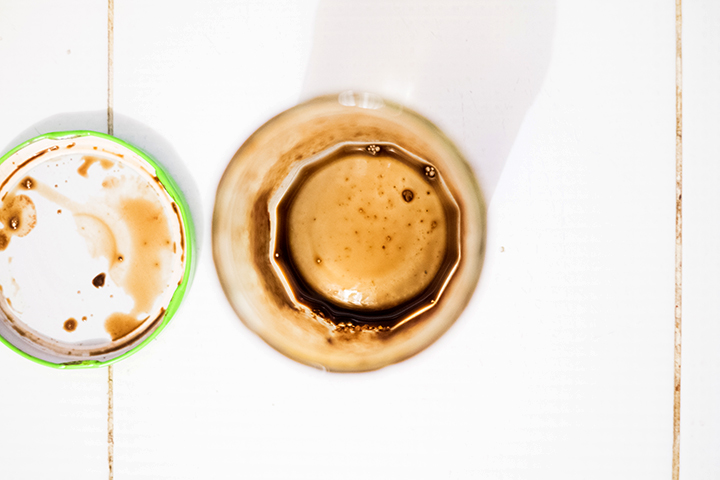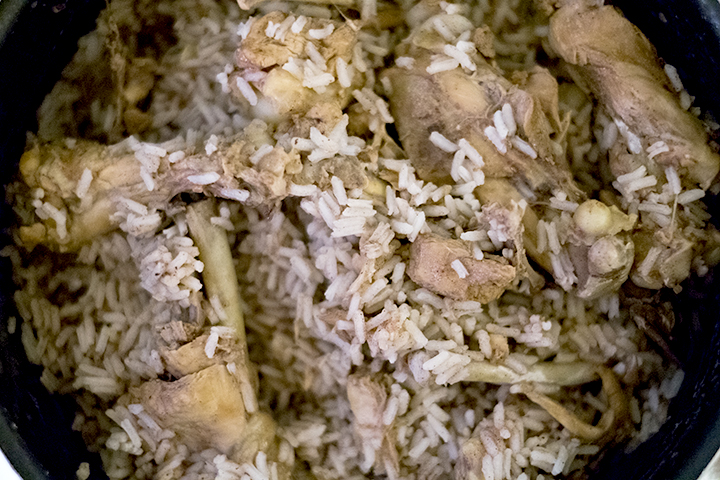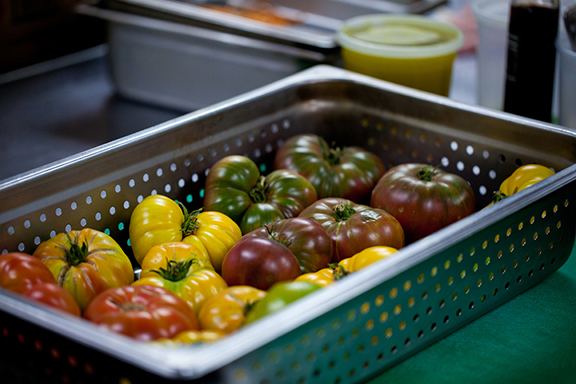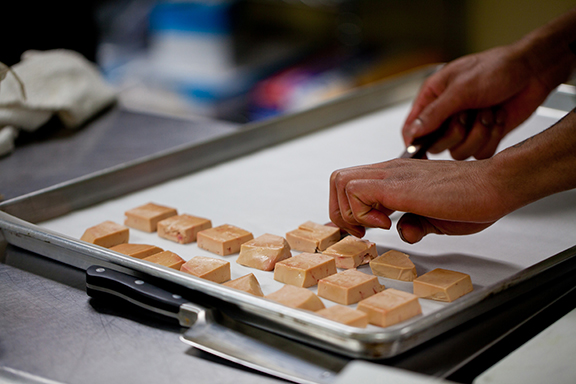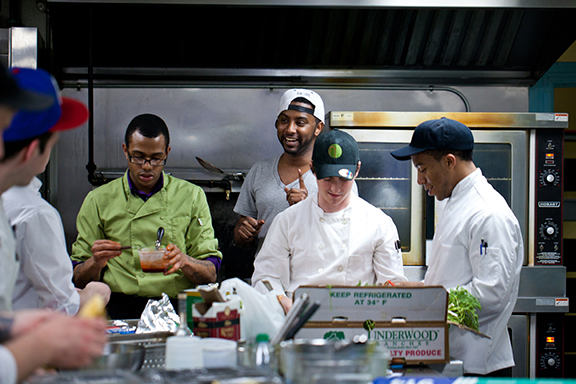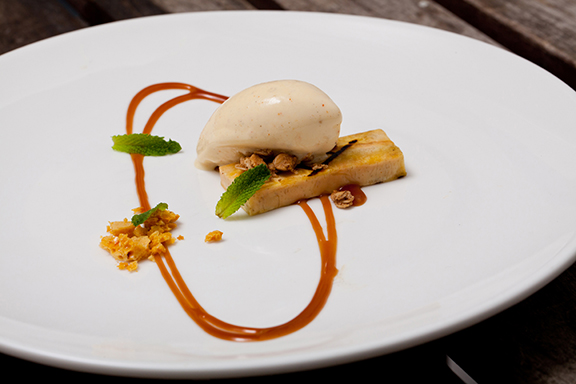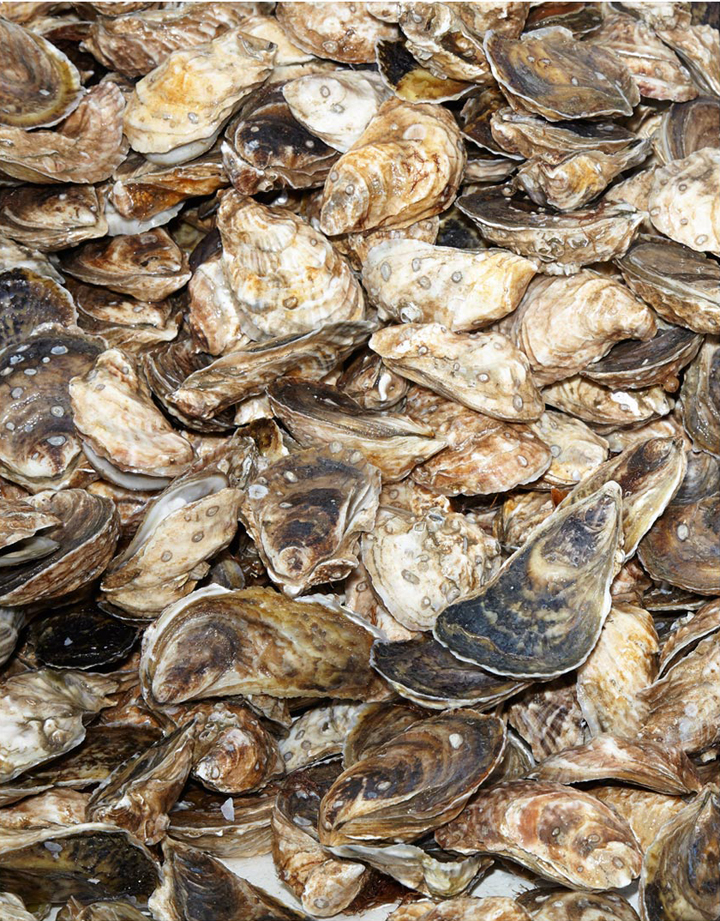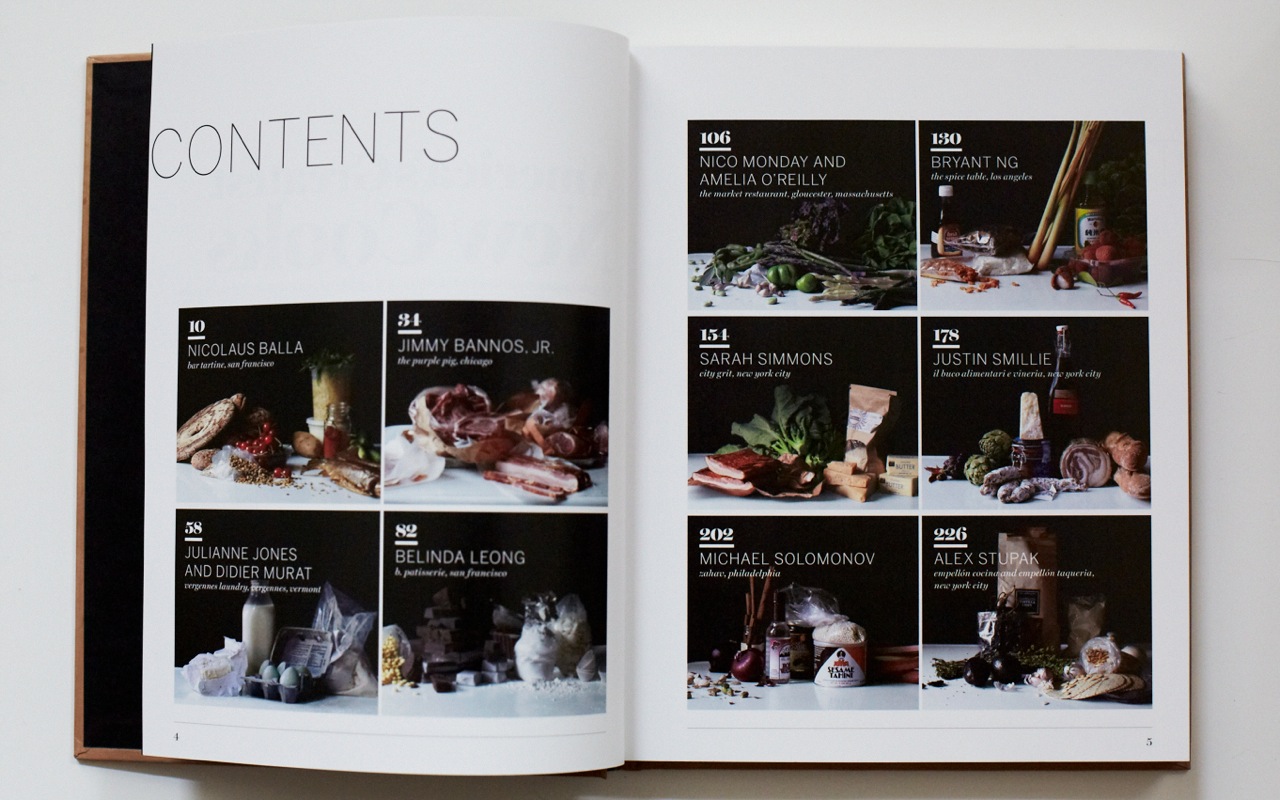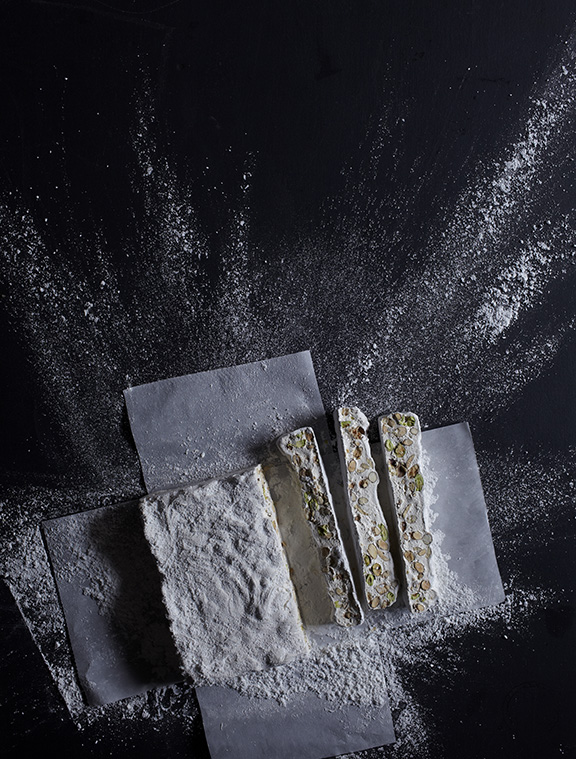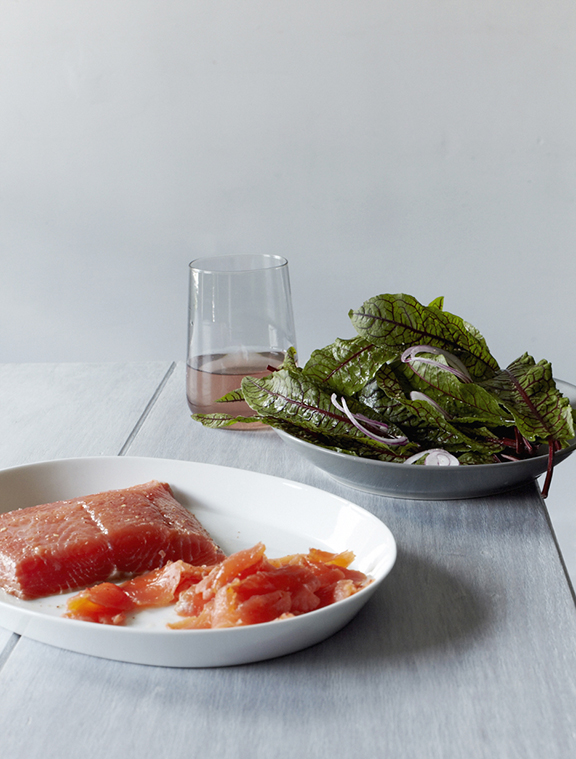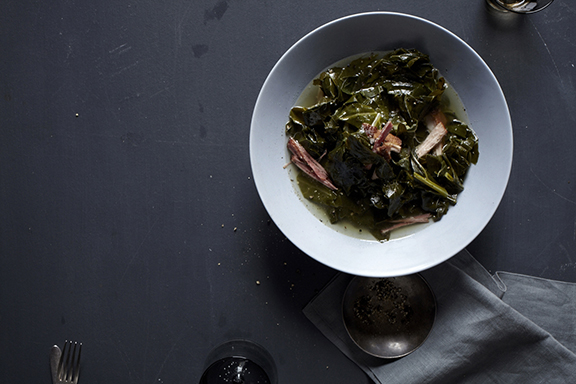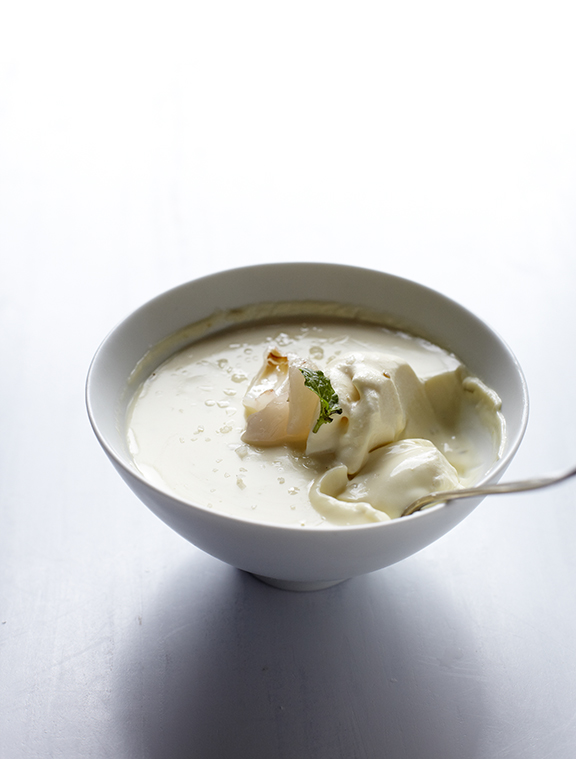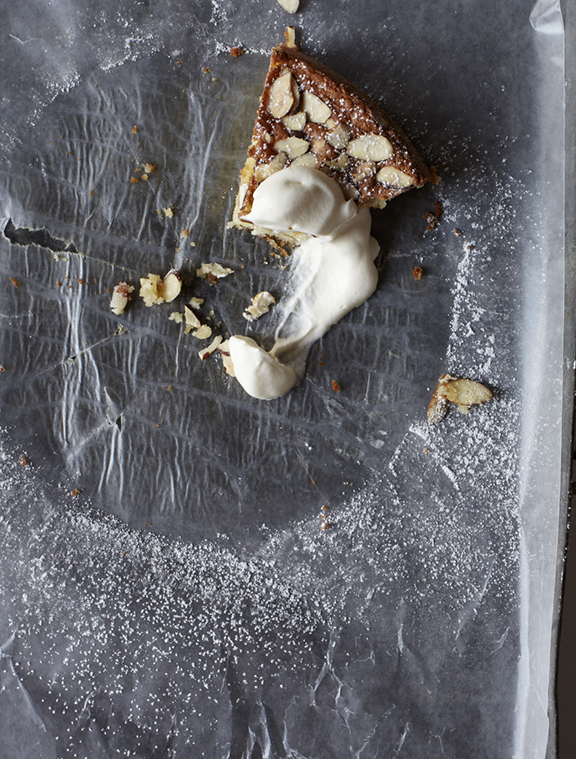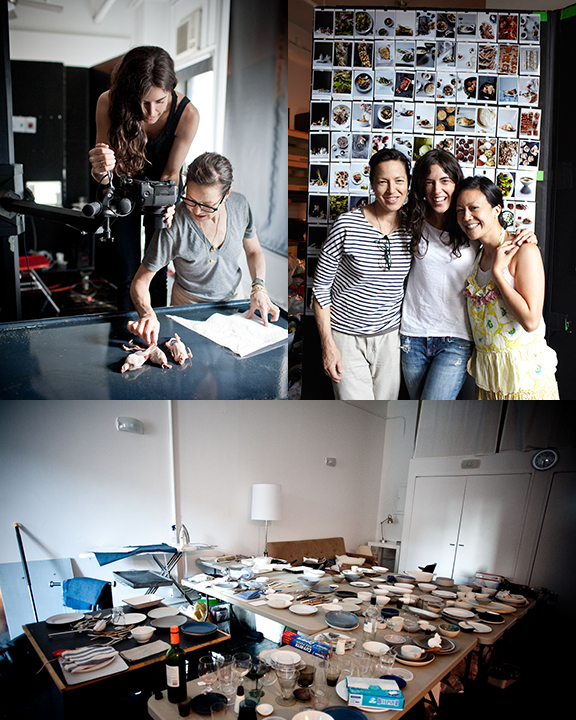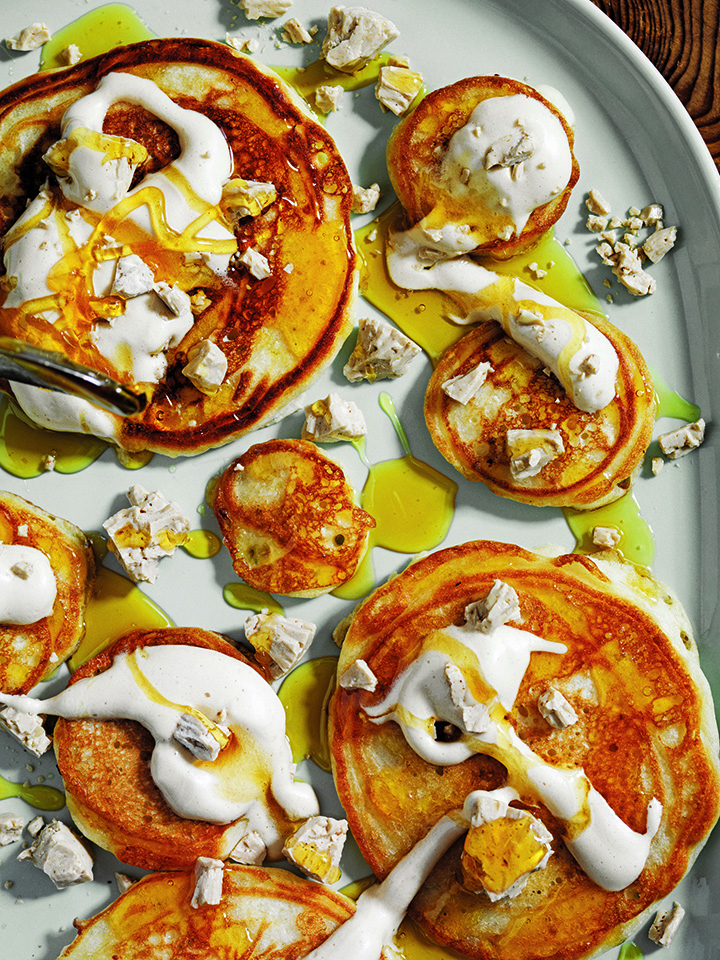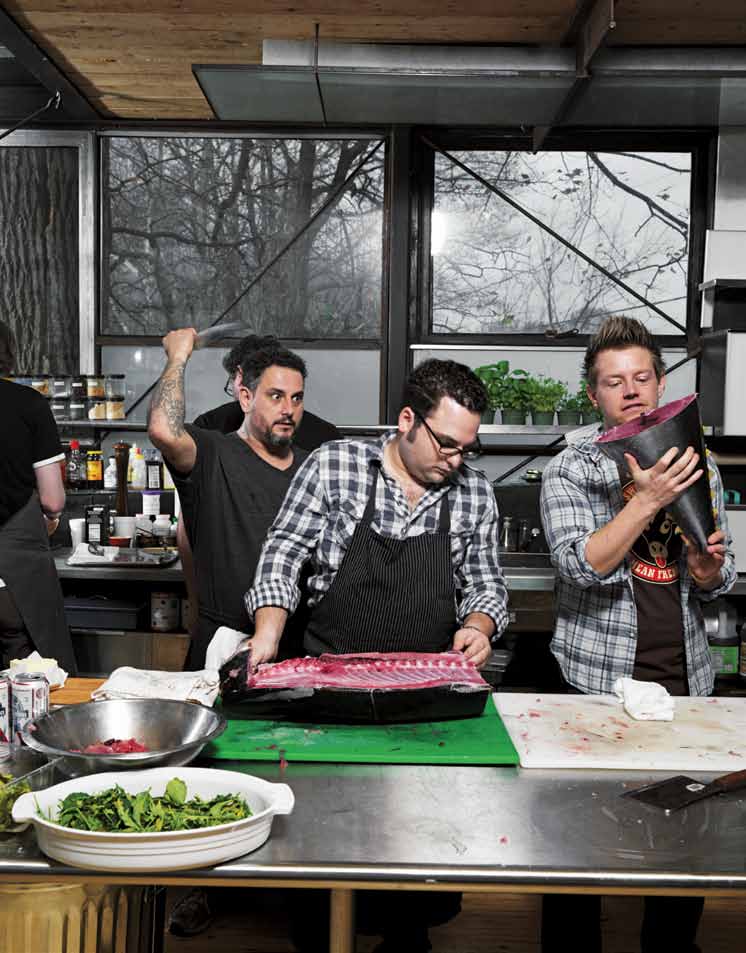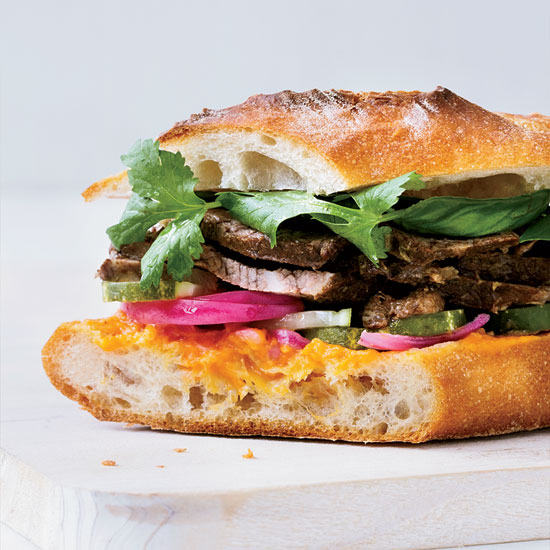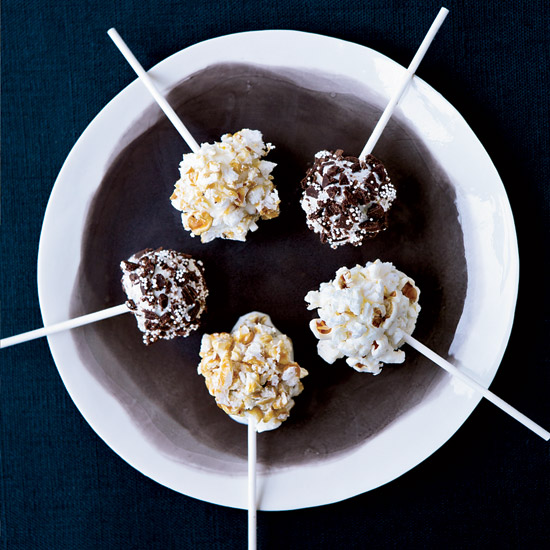4 Farmers Market Dinners, a snapshot. (France.)
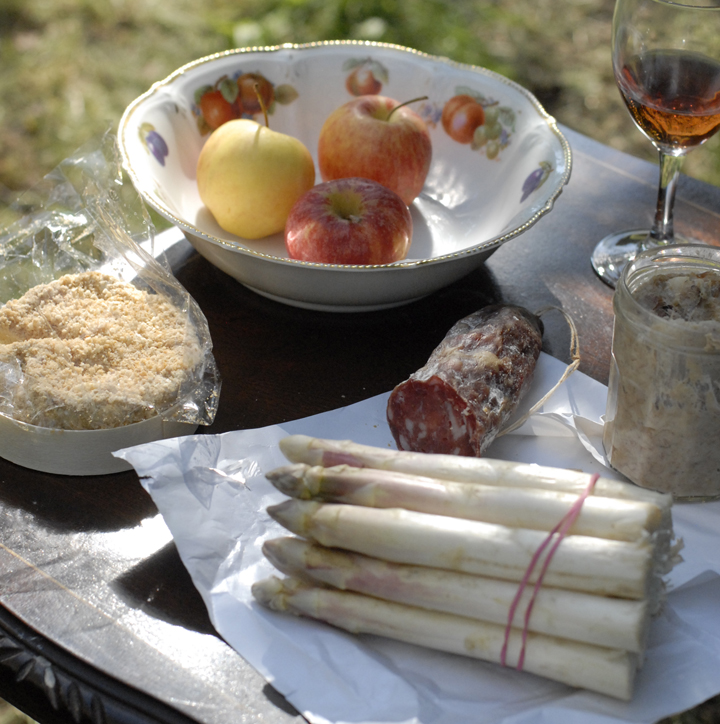 Day 1: Brantôme. The goal is to visit a different farmers market in the Dordogne region of France, daily, and bring whatever I find back for dinner. No supplementing from supermarkets, I'll eat only what I find at the open fresh farmers markets. So it's Day 1 and I'm in Brantôme. I find dense White Asparagus from the Farmers Market nestled beneath the cathedral, as well as Cheeses, Butter, Saucisse, Rillets, fragrant Apples. Dinner is Asparagus steamed upright in a little salted water, then served with a soft poached egg.
Day 1: Brantôme. The goal is to visit a different farmers market in the Dordogne region of France, daily, and bring whatever I find back for dinner. No supplementing from supermarkets, I'll eat only what I find at the open fresh farmers markets. So it's Day 1 and I'm in Brantôme. I find dense White Asparagus from the Farmers Market nestled beneath the cathedral, as well as Cheeses, Butter, Saucisse, Rillets, fragrant Apples. Dinner is Asparagus steamed upright in a little salted water, then served with a soft poached egg. The Brantôme Farmers Market is situated in the heart of the old town. This sign reads Goats Milk, Roasted Chicken.
The Brantôme Farmers Market is situated in the heart of the old town. This sign reads Goats Milk, Roasted Chicken.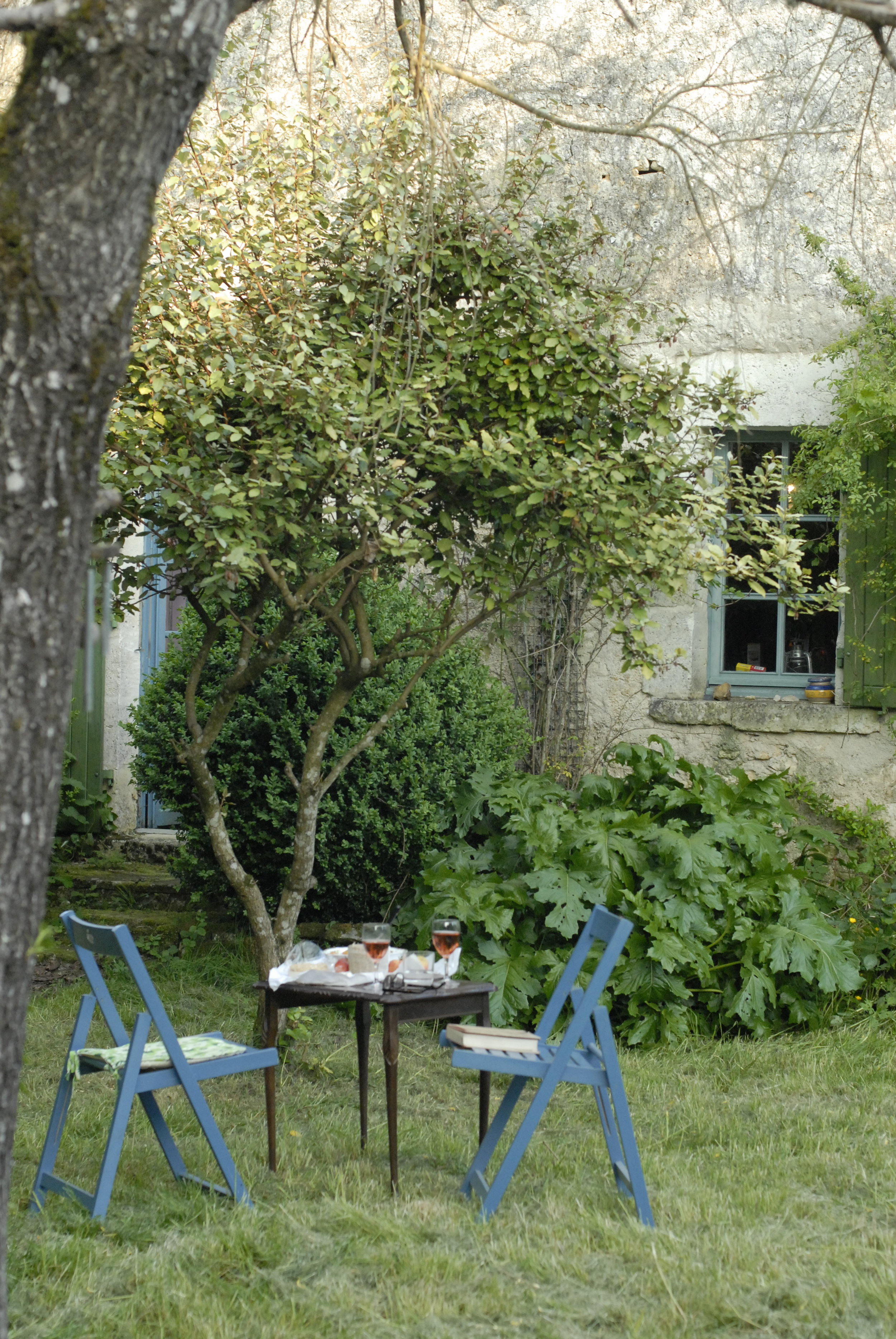 My dear friend Lucie, who lives in Bourdeilles, comes for White Asparagus dinner. (No heat or hot water in the farmhouse but the gas stove works great!) I like the rustic-ness of making do with what I've found at the market. Nothing is pre-packaged or processed. It's just plain, honest food.
My dear friend Lucie, who lives in Bourdeilles, comes for White Asparagus dinner. (No heat or hot water in the farmhouse but the gas stove works great!) I like the rustic-ness of making do with what I've found at the market. Nothing is pre-packaged or processed. It's just plain, honest food.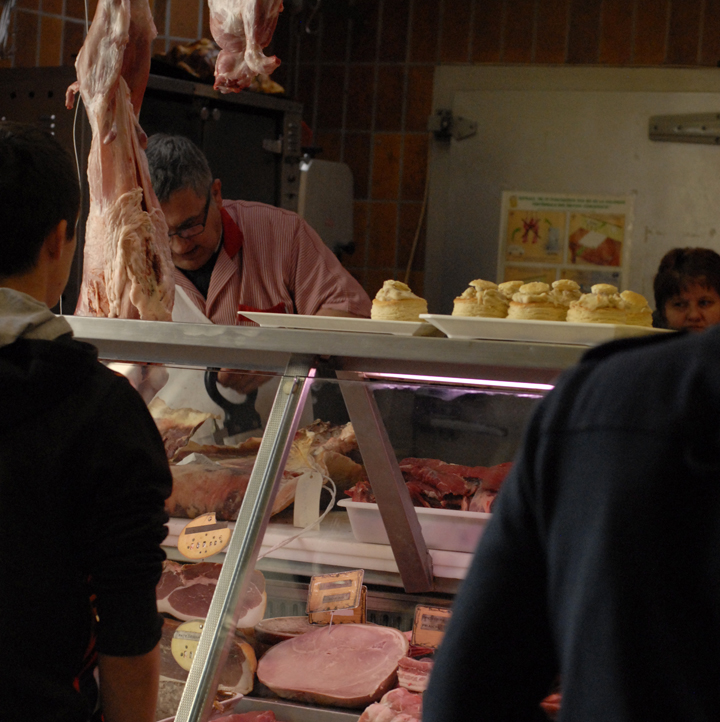 Day 2: Périgueux. I awake to freezing rain on the farmhouse roof. After Coffee and Marmalade on fried Baguette in fragrant Nut Oil, I head to Périgueux farmers market to find something to roast for dinner. I find a Chicken, some Potatoes. Then some fresh Strawberries, too. This picture is of a butcher in one of the indoor meat markets in Périgueux.
Day 2: Périgueux. I awake to freezing rain on the farmhouse roof. After Coffee and Marmalade on fried Baguette in fragrant Nut Oil, I head to Périgueux farmers market to find something to roast for dinner. I find a Chicken, some Potatoes. Then some fresh Strawberries, too. This picture is of a butcher in one of the indoor meat markets in Périgueux.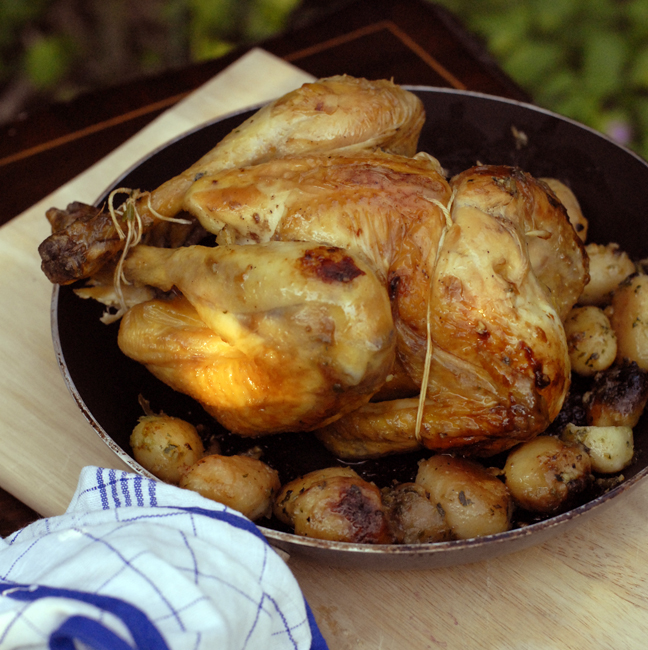 Back in the garden the rain has stopped and all is tranquil, except for the rustle of a robin red breast. I'm having a simple dinner of roasted Chicken in Garlic, Herbs... The Potatoes roasting in the chicken-y drippings... till crispy, and golden.. Later, there is Strawberries, Camembert. Lucie joins me again for dinner, her dog, Nusu, sits calmly with us but eyeing the chicken the whole while.
Back in the garden the rain has stopped and all is tranquil, except for the rustle of a robin red breast. I'm having a simple dinner of roasted Chicken in Garlic, Herbs... The Potatoes roasting in the chicken-y drippings... till crispy, and golden.. Later, there is Strawberries, Camembert. Lucie joins me again for dinner, her dog, Nusu, sits calmly with us but eyeing the chicken the whole while. 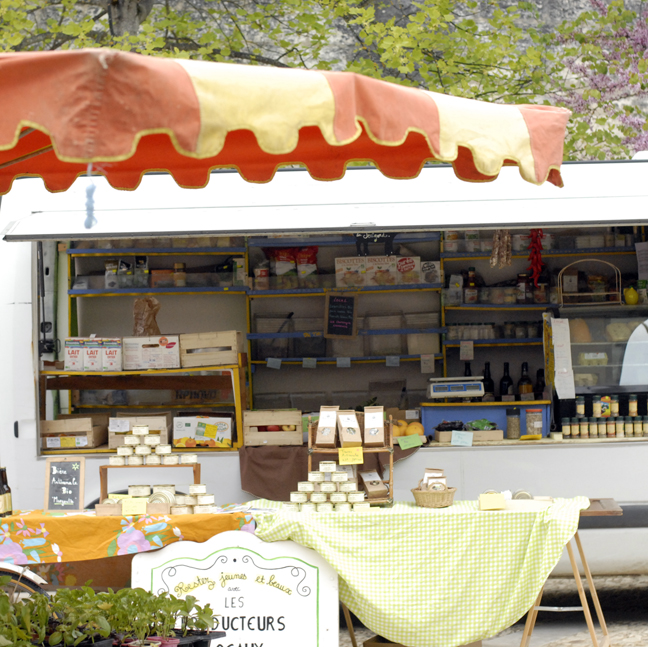 Day 3: Bourdeilles. Bourdeilles market is very small with only a handful of vendors. It's my closest market so I'm able to ride there on my bicycle. An old man drives his truck right up, opens the side window and from it sells everything one could need. I purchased Honey, Wild Onions, a large bunch of Radishes, and some fragrant yellow Apples with blotched, leathery skin. Now it's back up to the farmhouse to make dinner.
Day 3: Bourdeilles. Bourdeilles market is very small with only a handful of vendors. It's my closest market so I'm able to ride there on my bicycle. An old man drives his truck right up, opens the side window and from it sells everything one could need. I purchased Honey, Wild Onions, a large bunch of Radishes, and some fragrant yellow Apples with blotched, leathery skin. Now it's back up to the farmhouse to make dinner.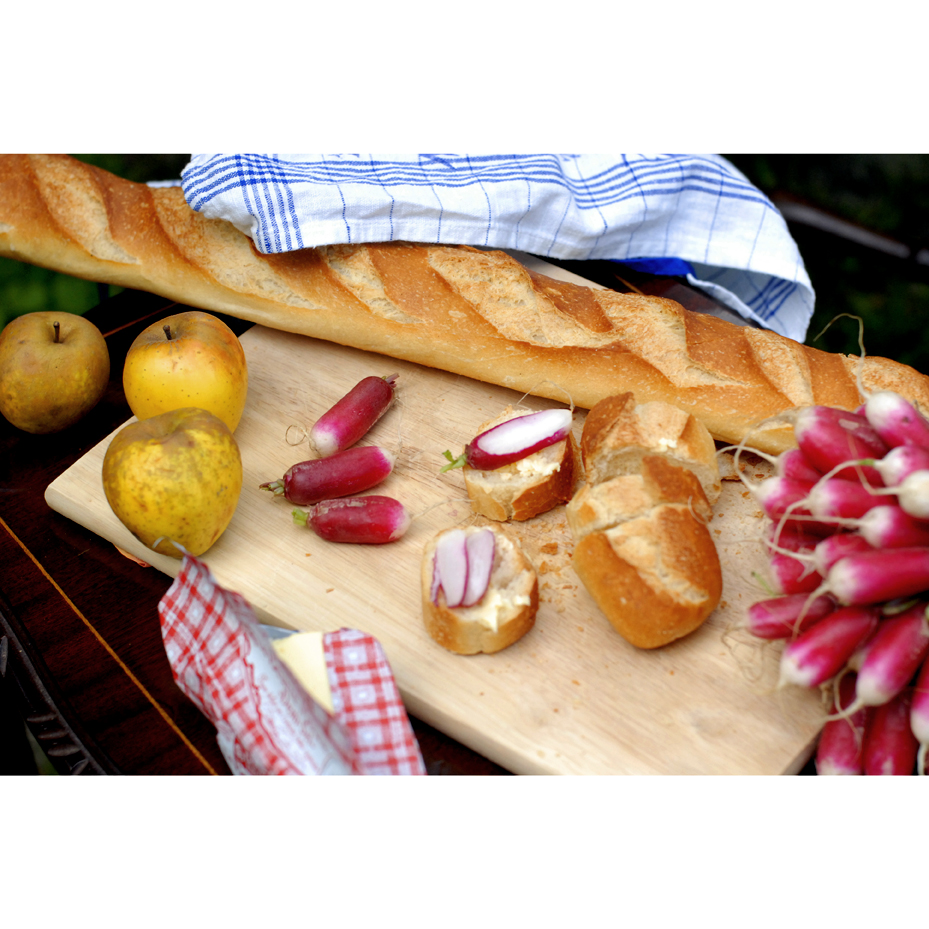 Dinner is Radishes, sliced on Baguette, with French Butter and Sea Salt. Honey and Apples.
Dinner is Radishes, sliced on Baguette, with French Butter and Sea Salt. Honey and Apples.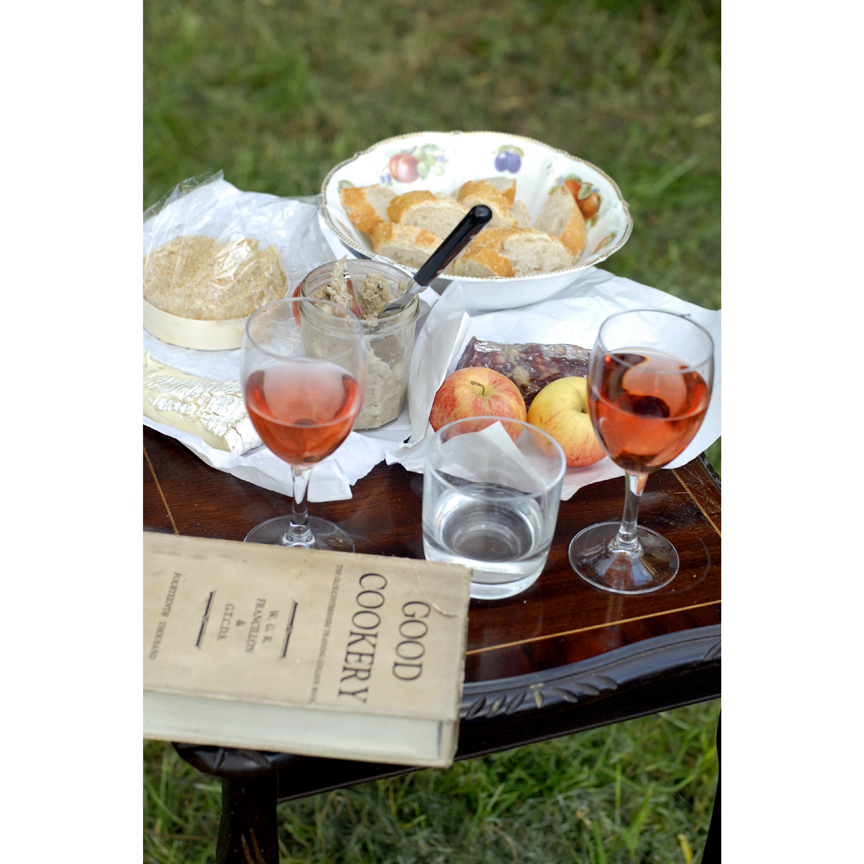 Day 4: Leftovers Such a drab word for what is essentially a most unique and delicious dinner, but there is so much leftovers from the past 3 days that dinner on the 4th night has become a menagerie of past purchases. Plus a sturdy, old (the best kind!) Cookbook, to keep me company. Lucie and Nusu don't make it over, and the night is quiet except for the plums falling softly from the trees that circle the farmhouse perimeter.
Day 4: Leftovers Such a drab word for what is essentially a most unique and delicious dinner, but there is so much leftovers from the past 3 days that dinner on the 4th night has become a menagerie of past purchases. Plus a sturdy, old (the best kind!) Cookbook, to keep me company. Lucie and Nusu don't make it over, and the night is quiet except for the plums falling softly from the trees that circle the farmhouse perimeter.
Can't get enough of Grant Cornett.
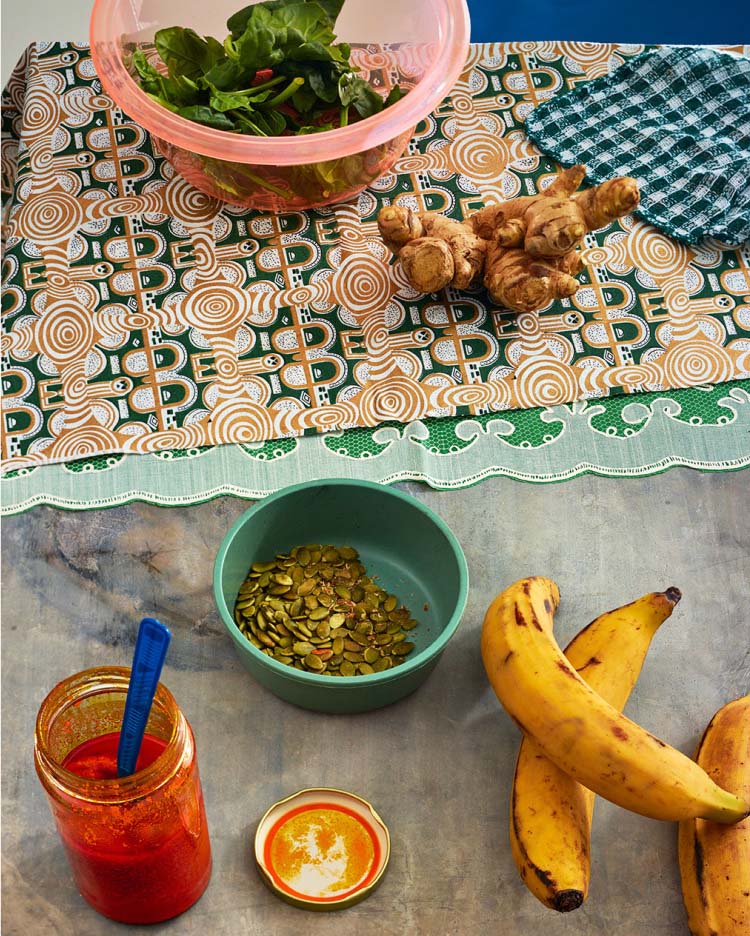
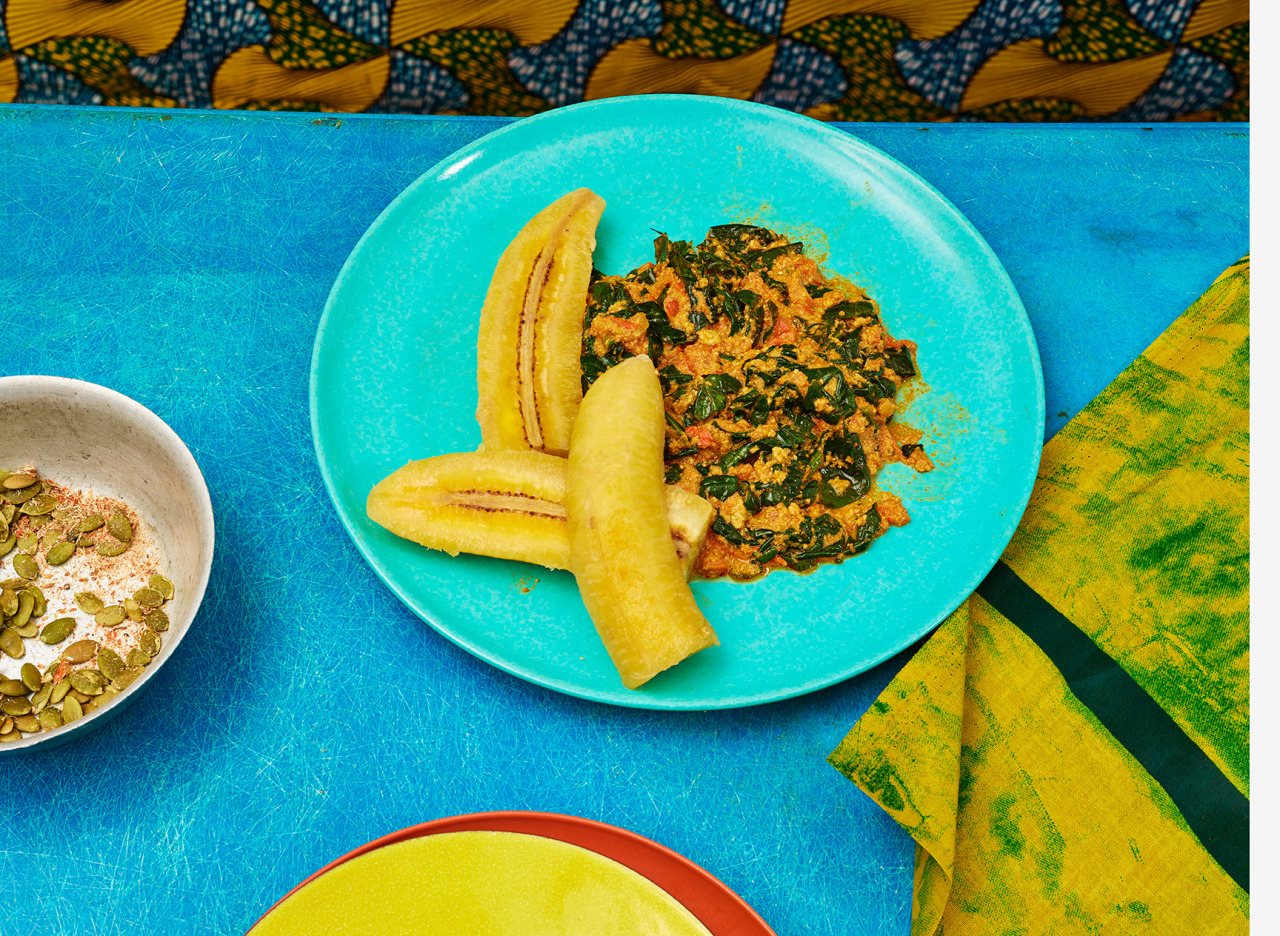 Grant Cornett and I have collaborated on cookbooks and editorial shoots in the past, and it's always great to work with him!
Grant Cornett and I have collaborated on cookbooks and editorial shoots in the past, and it's always great to work with him!
Here is some recent work I spied of his... These images appeared in The New Times Magazine, March 1st, 2015 in the Eat Column, by Francis Lam. The story was titled "More Than a Name. Learning to cook a Ghanaian Spinach Stew in the Bronx." The pic above is of Ghanaian Spinach Stew with Sweet Plantains. Photos by Grant Cornett. Food stylist: Maggie Ruggiero. Prop Stylist: Theo Vamvounakis.


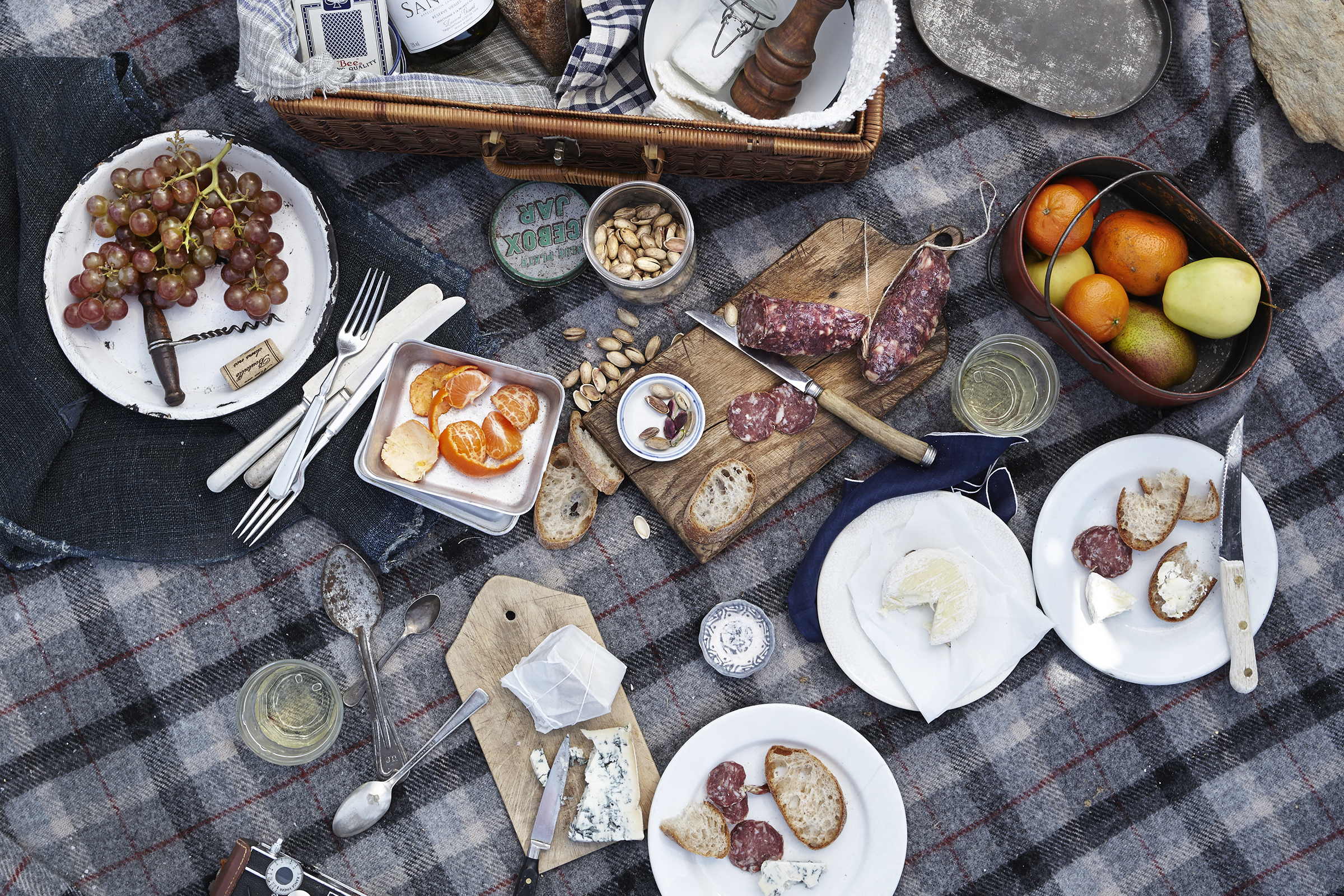


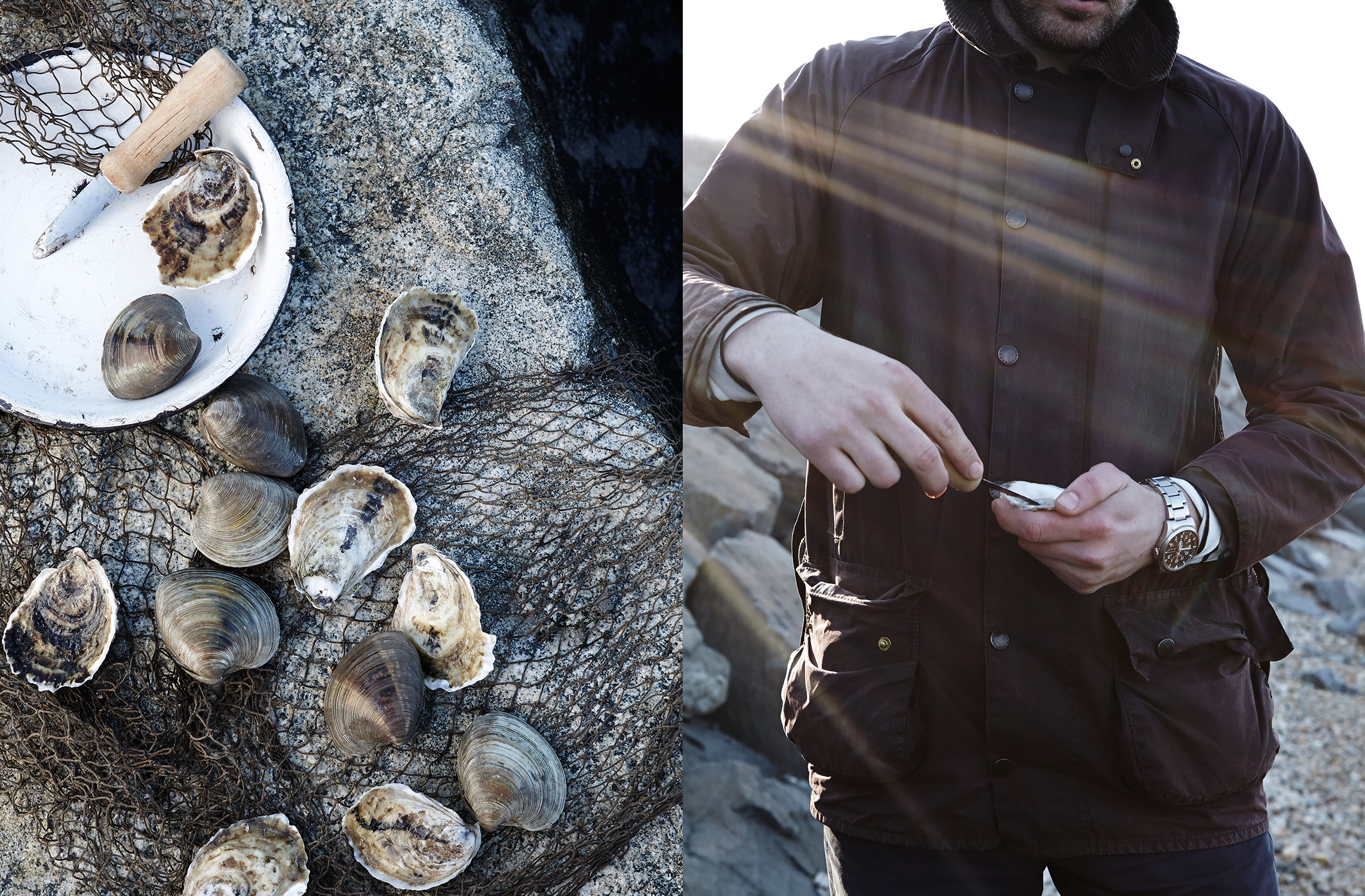
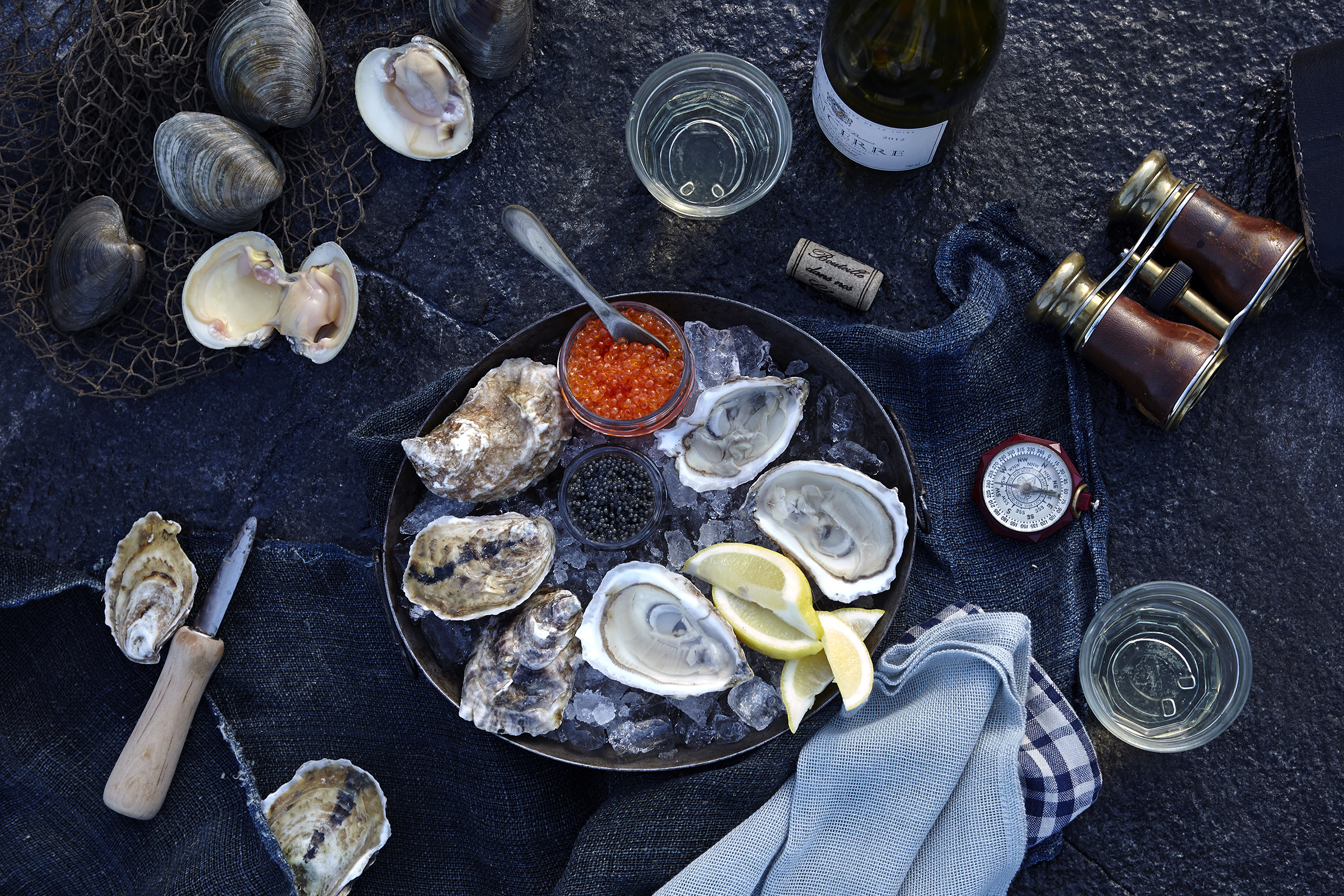


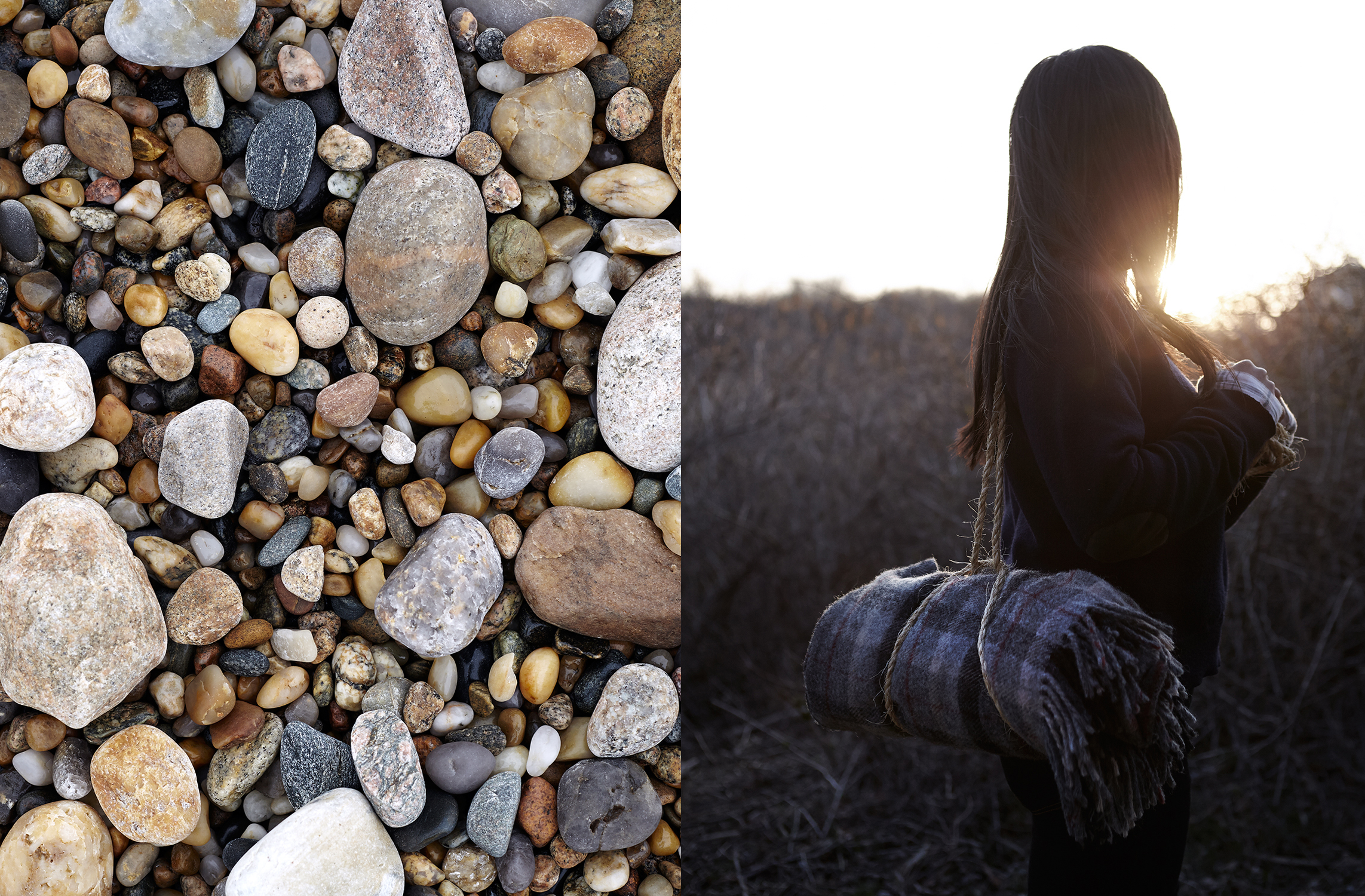
 After a bitter-cold, snowy, season, every New Yorker I know is looking for Winter to come to an end, and soon! I was actually going to post this story on Saturday, but then it literally started snowing. Small, airy flakes started descending side-ways from the sky. So here, a story about the End of Winter. Hopefully this is our visual good luck charm for hustling Spring in, and sending old man Winter packing. Photographs by Christopher Testani. Styling by Carla Gonzalez-Hart. Shot on location in Montauk, NY.
After a bitter-cold, snowy, season, every New Yorker I know is looking for Winter to come to an end, and soon! I was actually going to post this story on Saturday, but then it literally started snowing. Small, airy flakes started descending side-ways from the sky. So here, a story about the End of Winter. Hopefully this is our visual good luck charm for hustling Spring in, and sending old man Winter packing. Photographs by Christopher Testani. Styling by Carla Gonzalez-Hart. Shot on location in Montauk, NY.
Nose to Tail Eating

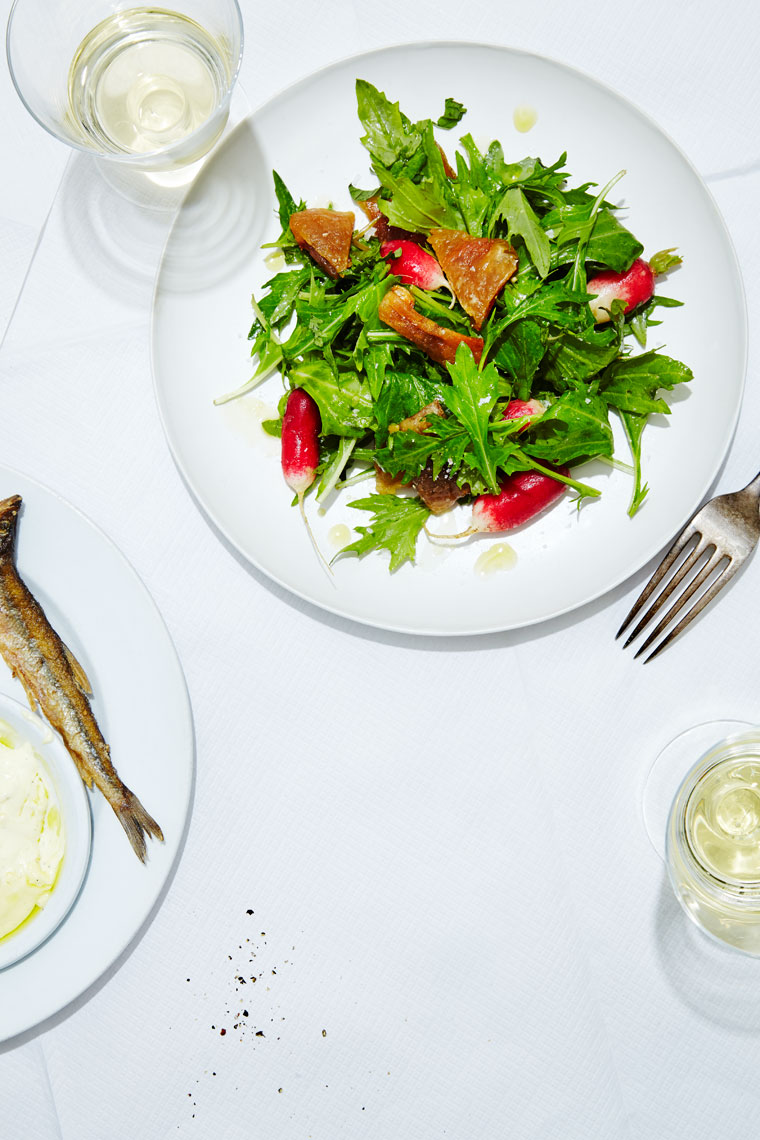 Above: Chicharron, Radish, and Dandelion Green Salad paired with a Pinot Grigio
Above: Chicharron, Radish, and Dandelion Green Salad paired with a Pinot Grigio 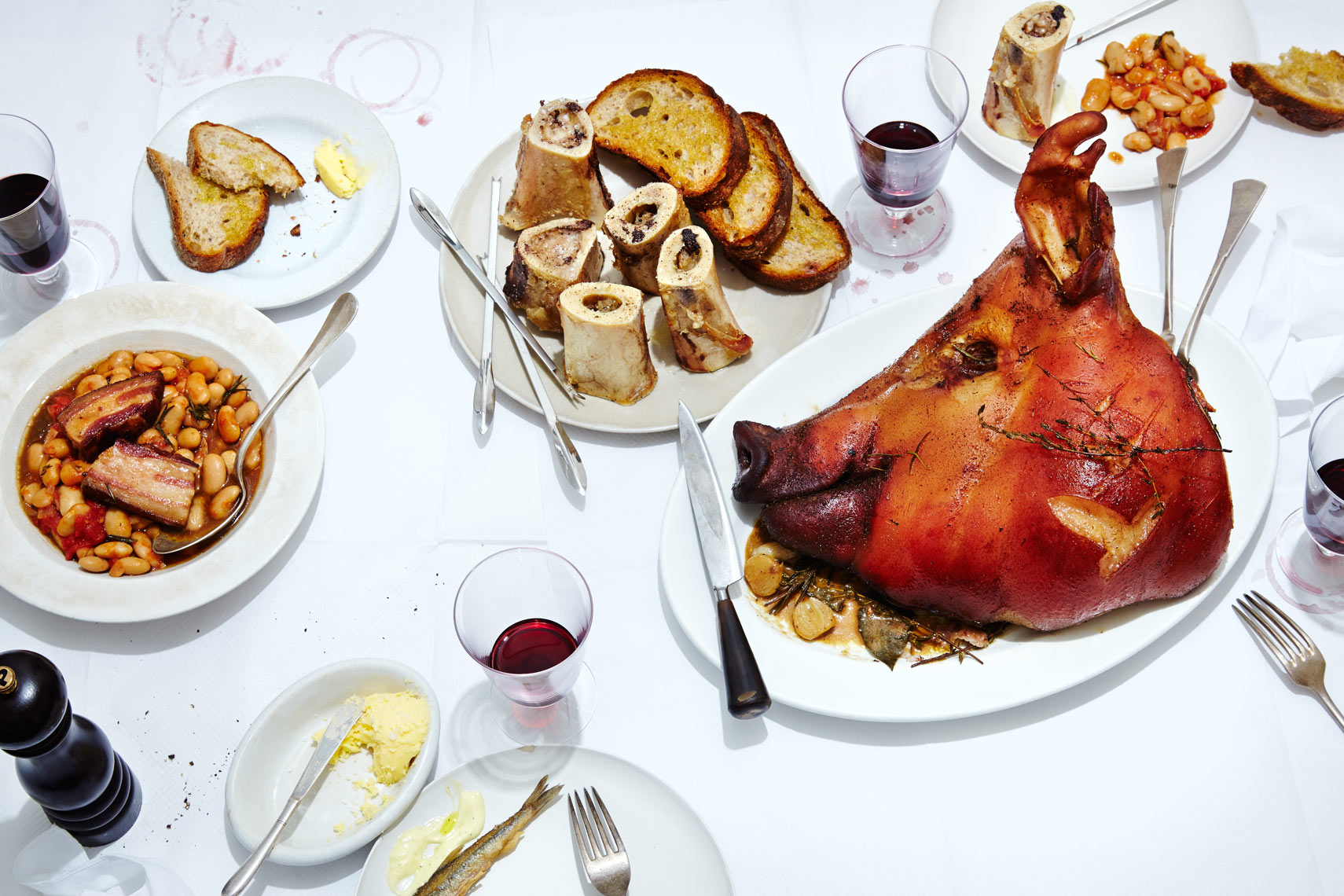 Above: Butter Beans with crushed Tomatoes and Roasted Pork Belly, Beef Bone Marrow with Sweet Cream Butter and Grilled Bread, and Roasted Pigs Head paired with a Beaujolais.
Above: Butter Beans with crushed Tomatoes and Roasted Pork Belly, Beef Bone Marrow with Sweet Cream Butter and Grilled Bread, and Roasted Pigs Head paired with a Beaujolais. 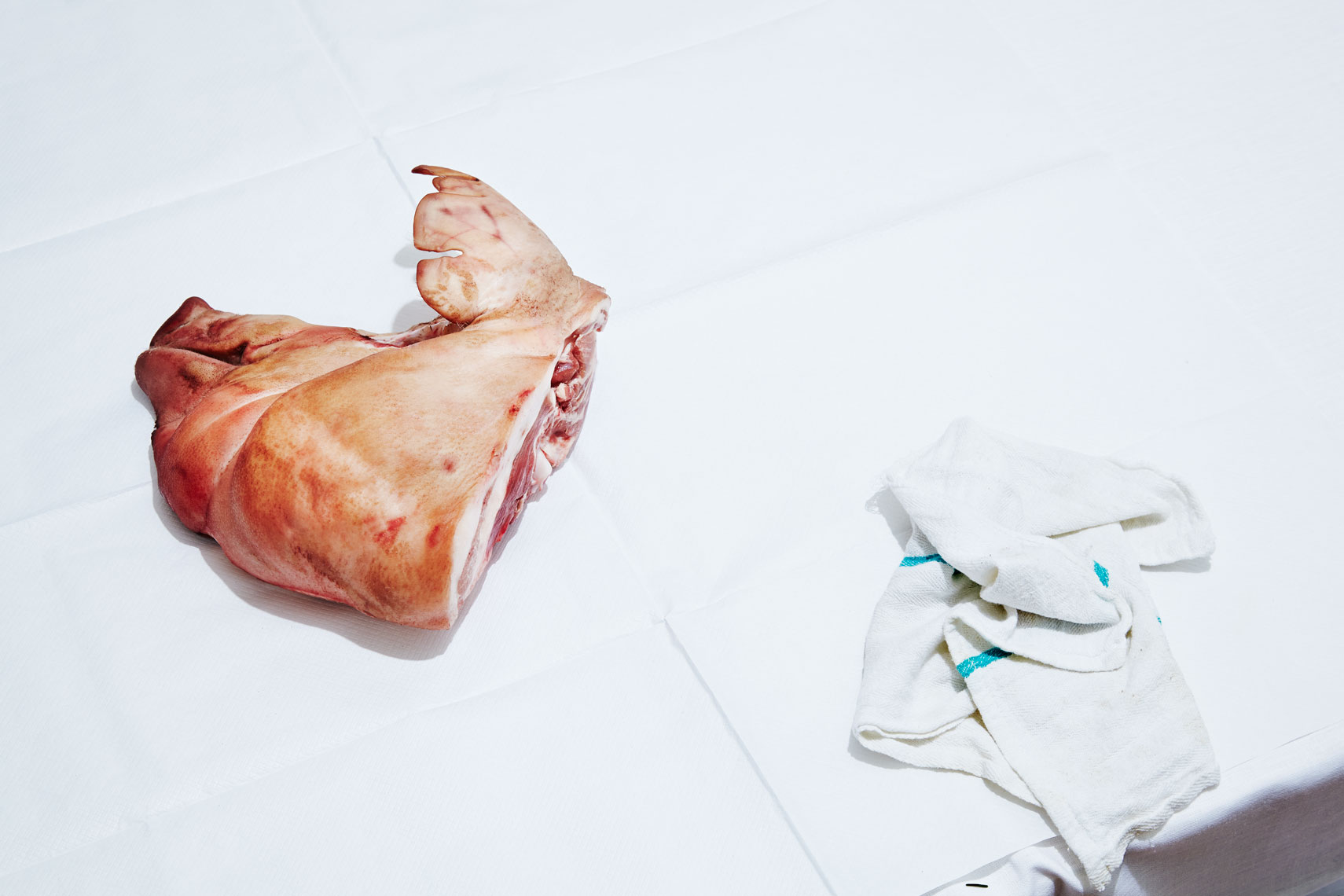
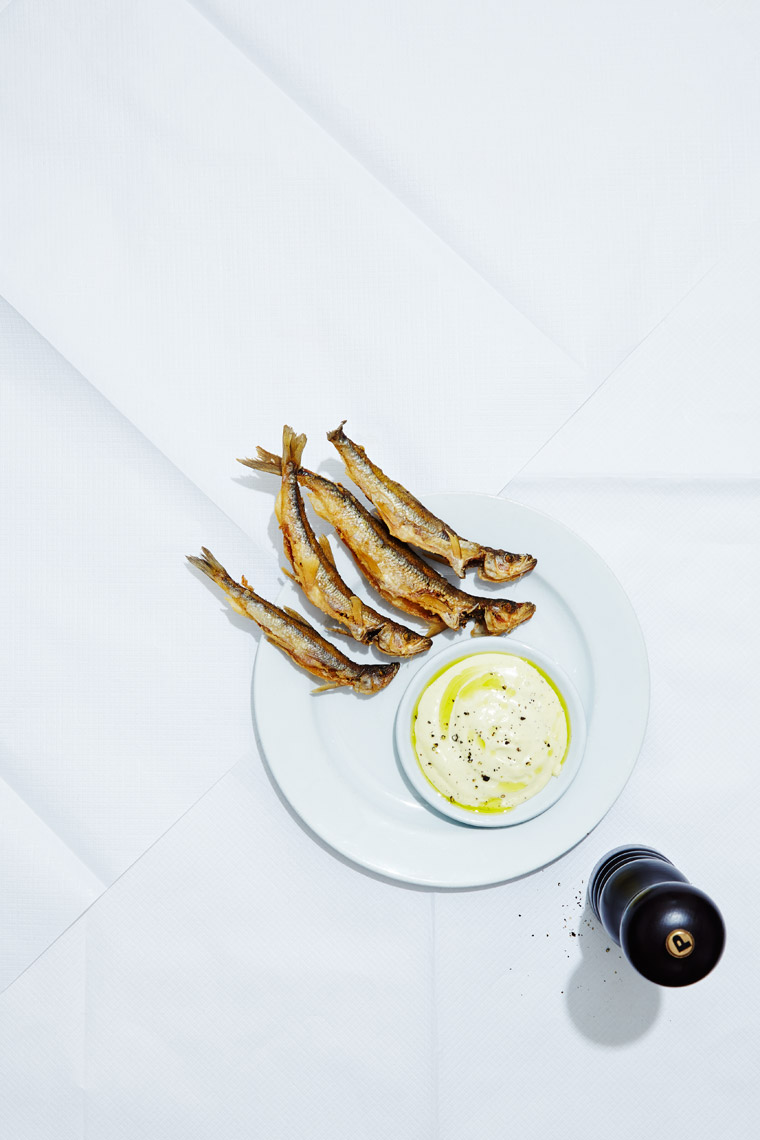 Above: Fried smelt with a Garlic Aioli.
Above: Fried smelt with a Garlic Aioli.
I ran into the very lovely and inspiring food writer Melissa Clark last night and she graciously reminded me that I had not posted a single thing in about a year, and where had the blog gone? The answer is this: I've had an absolutely insane travel schedule and a thumping great workload which have put me on hiatus from keeping my blog up to date this past year, and it's true, it's been neglected and I'm truly sorry. But New Years' resolutions aside (does anyone make those anymore? And besides... Eek, it's March, so forget that idea!) I've resolved to keep my site up to date with food imagery, tips and cool food ideas and great talent that inspires me, on a much more regular basis. Let's toast to that!
In that vein, here is a recent shoot from Photographer Justin Walker. It's inspired by Fergus Henderson’s restaurant: St John, in London. Chef Jay Wolman, who works at Marlow and Sons & Diner, here in Williamsburg, Brooklyn, created a memorable Winter Feast celebrating Nose-(or head!) to-tail eating, that involved crispy pig skin, beans and wonderful bone marrow. Inspired from Fergus' 2013 book, which is not entirely a new concept, but certainly a reminder of the continued importance of eating the whole animal, and looking for ways to wrestle with the ugly bits, to ultimately not waste a single piece.
Enjoy!
Food: Chef Jay Wolman. Styling by Kaitlyn Du Ross. Photography: Justin Walker.
Follow them on Instagram: Jay Wolman @the_white_bison Justin Walker @behindthedawn Kaitlyn Du Ross @babethebluebox
Justin Walker is a commercial and fine-art photographer based in Brooklyn, NY. He specializes in food, travel, and conceptual still-life photography. A native of Durango, Colorado, he grew up hunting, fishing, camping, snowboarding, and spending most of his waking hours outdoors. His childhood always involved a family adventure in the making; from commercial salmon and halibut fishing in Alaska to ranching in southwestern Colorado. The natural world is a foundation of inspiration in much of his work. He now splits his time in between Brooklyn, NY and the Catskill Mountains. With a background in graphic design, his photographic style encompasses a similar clean cut graphic aesthetic.
-------------------------
Want to see my most recent work? I now have a separate section devoted to just this. Click Here. Or on the page tab at the top marked 'Recent Work.'
A trip to Vedge, a Vegan Restaurant in Philadelphia.
Why would you seek out a Vegan restaurant during Winter, when you know that most of the peak produce available would be more plentiful in Summer?
Yet, here I was, on an speeding Acela train to Philly, meeting up with photographer Jason Varney to shoot a March Story for Cooking Light at Vedge restaurant, in December.
I didn't have high hopes. As a person who prides herself on trying the medium-rare all-beef burger as my measure for how good a restaurant is, I was expecting to fake pleasure at a cold carrot or oooh phony praise at a curry flavored lentil. I really had no idea.
Photographer Jason Varney met me at the train station. He's one of my favorite people to work with ever; not least because he is a master at capturing the beauty of natural light, but his foppish, red beard shrouds the endearing qualities of one of the kindest men I've ever known.
And how was the food? Vedge restaurant didn't disappoint, from the first extra strong coffee poured for us kindly by Kate, the co-owner, to the final red-wine soaked mushroom, and you can see the results and get recipes to try at home, in the March Issue of Cooking Light magazine. (On newsstands now.)
Photos: Jason Varney Art Direction/styling: Dimity Jones
To subscribe to Cooking Light, click here.
Memorial Day Cookout: Pork Butt. (And then some.)
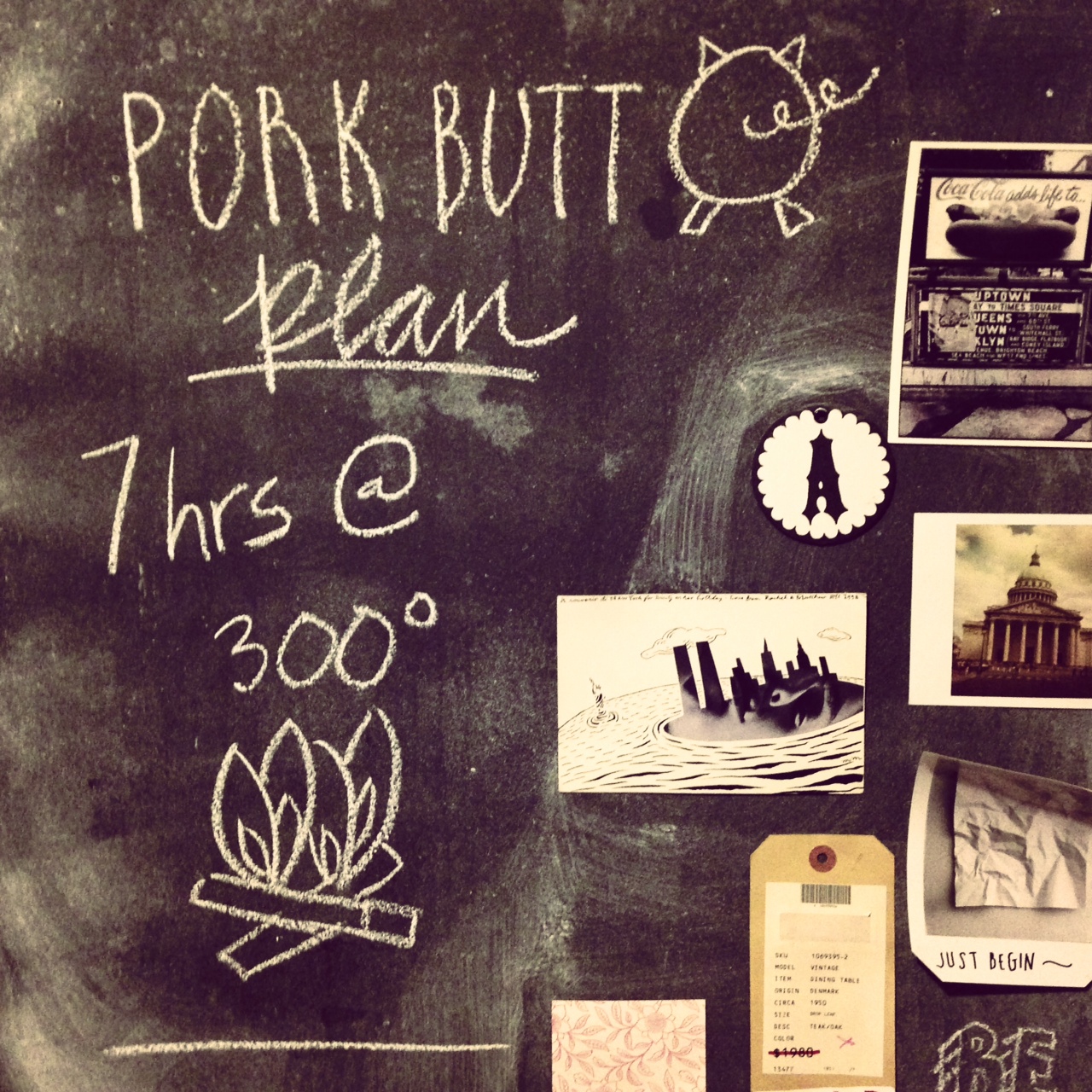 Everyone's got to have a plan for the butt...
Everyone's got to have a plan for the butt...
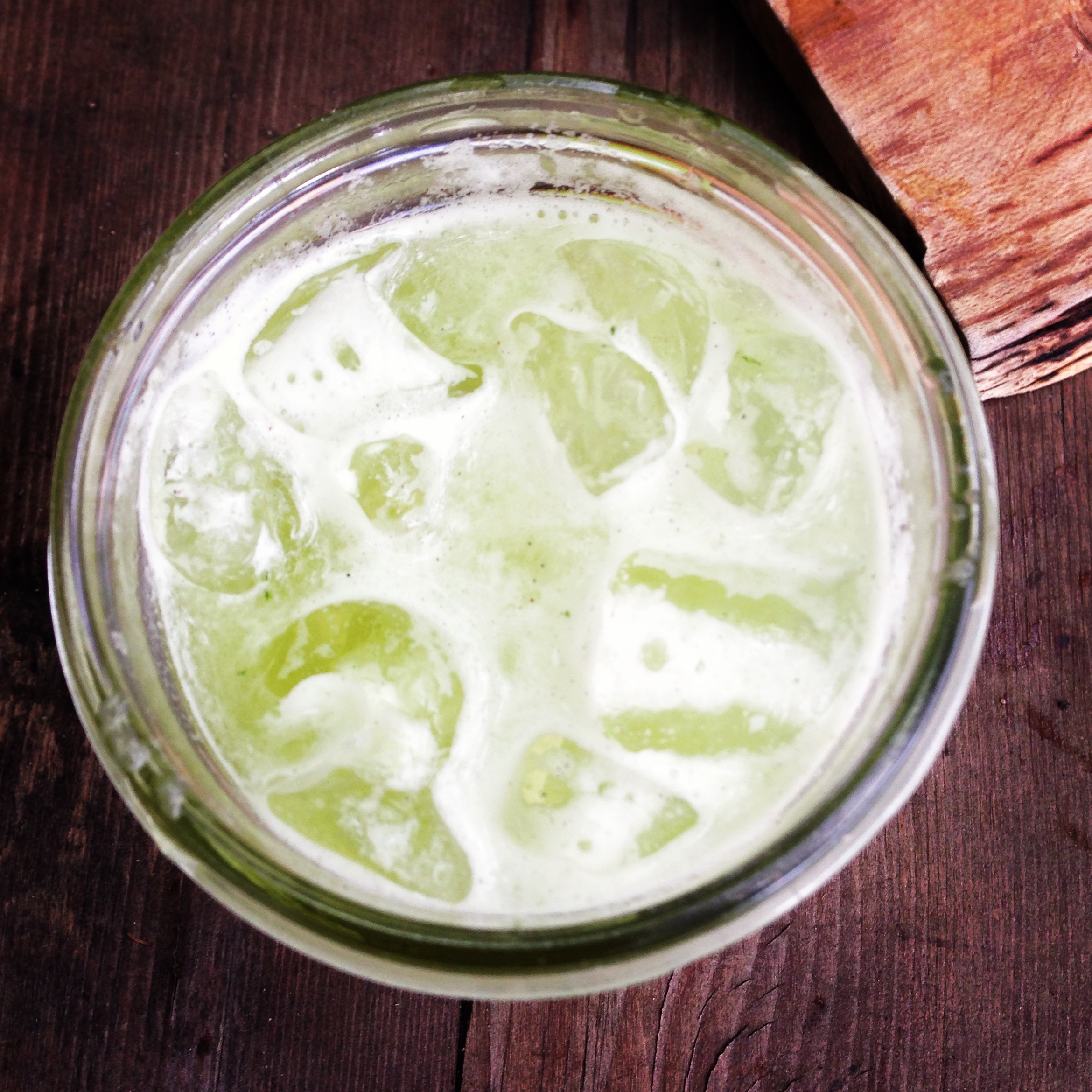 We created a cocktail: A Cucumber and Cardamon Gin Fizz.
We created a cocktail: A Cucumber and Cardamon Gin Fizz.
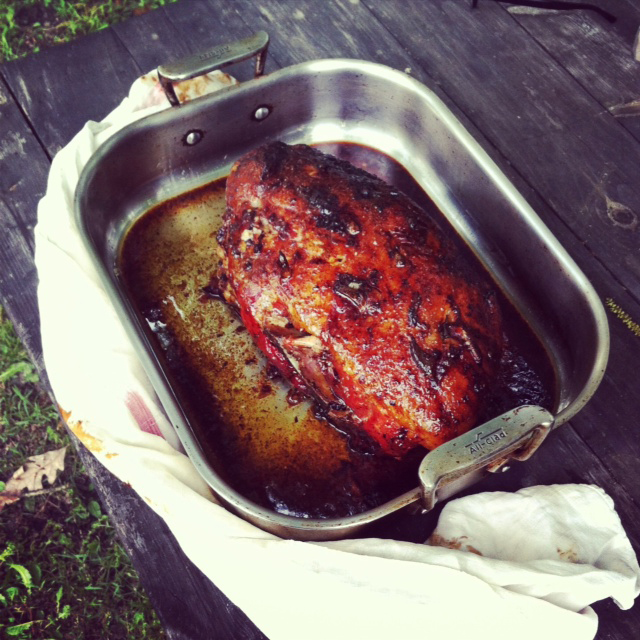 An 8lb Pork Butt with Bone In, roasted at 300 degrees for 7 hours.
An 8lb Pork Butt with Bone In, roasted at 300 degrees for 7 hours.
 S'mores please. Graham Crackers, with a slab of chocolate and soft and sticky marshmallow, from the hot campfire.
S'mores please. Graham Crackers, with a slab of chocolate and soft and sticky marshmallow, from the hot campfire.
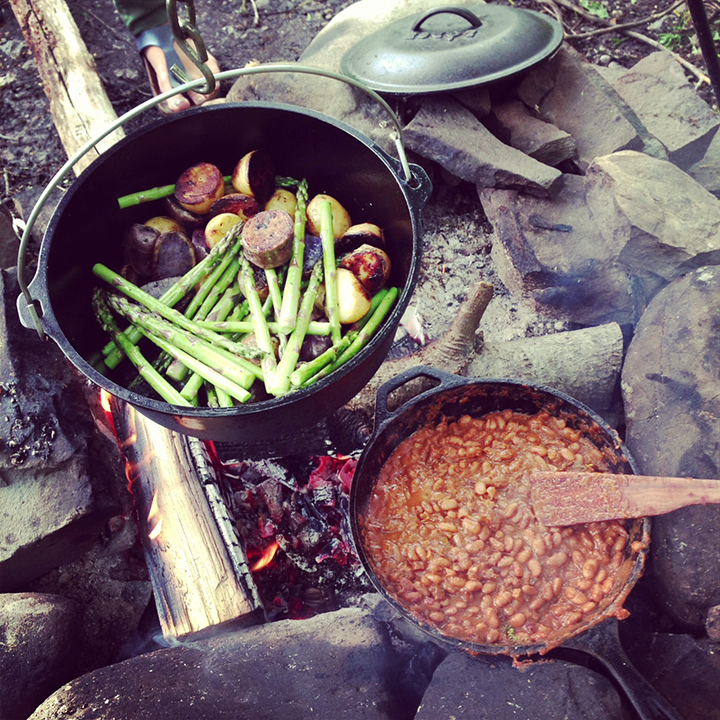 Campfire cookout; roasted potatoes, and Boston Baked Beans
Campfire cookout; roasted potatoes, and Boston Baked Beans
 Better than carving in the tree: A tree drawing.
Better than carving in the tree: A tree drawing.
 Boys; they like to climb trees.
Boys; they like to climb trees.
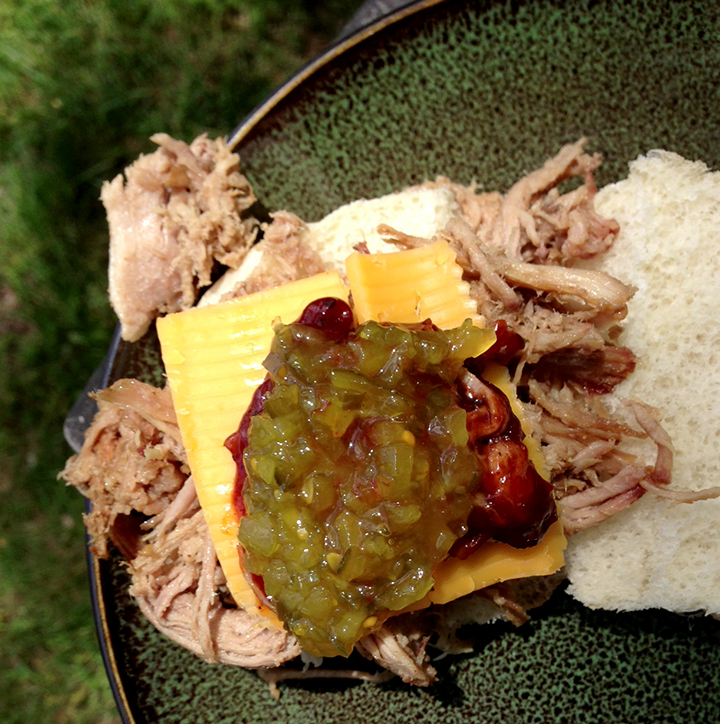 The next day, lunch; Pulled Pork Sandwiches with Relish, BBQ Sauce, and Cheddar on Brioche Buns.
The next day, lunch; Pulled Pork Sandwiches with Relish, BBQ Sauce, and Cheddar on Brioche Buns.
PORK TO DIE FOR: Memorial Day Weekend was spent on the Delaware River, upstate New York. I didn't have a lot of time to figure out the menu, but inspired by a recent shoot I did for the upcoming issue of Cooking Light magazine, I grabbed a pork butt, (bone in) and started roasting... 3 hours at home on in my oven, and then I threw the pork butt, cooled, in a plastic bag and hauled it up the next day in a car with my son and some friends, to the house where we roasted the butt for another 4 hours. We built a fire, and when crackling and hot, roasted both Purple and Yellow potatoes, some fresh Asparagus and in another cast iron skillet some Boston Baked Beans. A perfect impromptu dinner paired with cool cucumber gin cocktails, sprinkled with powdered cardamon. And for dessert? S'mores and Mint and Chocolate chip Ice-cream. The next day we used the leftovers for pulled pork sandwiches with relish, BBQ sauce, and Cheddar on Brioche buns.
RECIPES:
PORK BUTT: Take an 8 lb Pork Butt. Combine 3 tablespoons of Dark Brown Sugar, 2 big glugs of Chinese style Chili and Garlic Sauce, 1 teaspoon of Mustard Powder, 2 teaspoons of Salt, a teaspoon of freshly ground Pepper. Stab the raw pork butt and stud with slivers of Fresh Garlic all over. (Cut the clove in half, then insert). Rub the sugar/chilli salt rub all over the top. Preheat oven to 410, add pork butt in a baking dish, then reduce heat to 300, for 7 hours. Use an internal themometer, and when the inside comes to 135, and the pork is juicy but tender, remove. The pork will be mild in terms of spiciness, and able to stand up to robust BBQ sauces. Good for kids.
STOVETOP BOSTON BAKED BEANS: Start one day in advance. Let 1 pound of dried Pinto Beans stand in water overnight. Drain beans, set aside. Cook one diced slab of Double Smoked Bacon (like Schaller Weber), about 10oz until crisp. Drain bacon leaving fat and in the fat, fry 1 medium Brown Onion, finely diced. Meanwhile in a separate bowl, combine 1 cup of ketchup, 1/3 cup of maple syrup, 1/3 cup of Apple Cider Vinegar, 1/4 cup Dry Mustard, 2 tablespoons of Molasses or Treacle, 2 Bay Leaves, 1 and 1/2 tablespoons of finely chopped Garlic, 1 teaspoon of Salt, 1 teaspoon of ground Pepper. Pour the softened beans, the cooked onions and crispy bacon mixture into dutch oven or heavy based saucepan on the stove top. Pour over the ketchup sauce mixture, and then add 4 cups of Chicken Stock. Bring to boil, reduce to simmer, as it becomes evaporated add slowly another 4 cups of Water, or enough water until the beans are tender and the liquid has thickened, and reduced. About 4 hours. (You can make this ahead and just heat the beans before serving.)
-----------------------
Pics: Dimity Jones.
Charred Ramps + Asparagus with Baked Eggs + Cream
What happens when a food stylist and a food photographer get together for breakfast? They decide to shoot what their cooking! Photographer Linda Pugliese and Food Stylist Chelsea Zimmer got together to cook up a breakfast and decided to shoot their Charred Scallion + Asparagus breakfast dish complete with Eggs and Cream. Spring-like and oh-so yummy. A great idea for what to do with Ramps that are currently right in season.Thankfully they shared their shots and recipe with me. Thank you!
6. Cut carefully with a sharp knife and serve immediately with buttered crusty bread.
----------------------
Yellow Squash Soup with Cured Strawberries
Hot Southern Buttermilk Biscuits
I got up this morning and made 2 dozen Buttermilk Biscuits. It had been weighing on my mind all night. They're actually for a friends' birthday party, a foodie-friend, actually the ex Creative Director of Martha Stewart (no pressure!) and while it was the first thing I thought about this morning when I woke, I literally got up, as in a trance, made coffee, and then grabbed a big bowl and started making, and they were done in 30 minutes. Sometimes its better not to think too hard about things and just do it! Begin the motions and before you know it, it's done. 10 minutes to make them, 20 for baking time and within minutes the house was fragrant with the smell of fresh baked biscuits and I realized it wasn't even 10 am and the task that was on my mind most of the night was completed. I used a special buttermilk this time and I think it made a huge difference. This recipe is from Alton Brown so it's foolproof, and easy, and Oh-so-good... I highly recommend getting up tomorrow morning and making everyone a batch of these.... Hot Southern Buttermilk Biscuits, pile them high with lots of Unsalted Butter and Strawberry Jam, or Orange Marmalade which is my favorite... Heaven!
Have a great weekend everyone! x
-----------------------------------------
HOT BUTTERMILK BISCUITS Recipe from Alton Brown The recipe makes 1 dozen, I doubled this to make my 2 dozen.
2 cups of flour (I used all purpose) 4 teaspoons of baking powder 1/4 teaspoon of baking soda 3/4 teaspoon of salt (I used kosher salt) 2 tablespoons of butter (I used Organic Unsalted) 2 tablespoons of shortening (I used Organic All Vegetable Shortening) 1 cup of Buttermilk (I used Amish Country Buttermilk with live probiotic cultures from Eco Meal)
Preheat oven to 450 degrees
In a large bowl, combine flour, baking powder, baking soda, salt. Using your fingertips rub the butter and shortening until the mixture looks like thick crumbs. Make a well in the center and pour in the chilled buttermilk. Stir until the dough comes together. The dough will be very sticky. Turn dough onto floured surface, and gently fold dough onto itself a couple of times. Press out to 1 inch think round, cut out biscuits with a 2 inch cutter, be sure to push straight down through the dough. Place biscuits on a parchment lined baking sheet. Reform scrap dough working as little as possible and continue cutting. (Note from Alton: biscuits from the second roll out will not be quite as light from the first but hey, that's life.)
Bake until biscuits are tall and light gold on top. 15-20 minutes.
----------------------------
Pics: Dimity Jones
How to Slaughter a Chicken (and make the dish Arroz Cabidela)
What to do with Ramps? Make Ramp Pesto!
Under a warm sun, somewhere in Kentucky... If you look closely, you can almost see the machine, ticking away inside of him. And what of it? He earned his solitude, this idyllic bucolic setting where there's not much to do but make tracks along dusty roads, pick wild things, like ramps and garlic and read mystery books in an old wicker chair that faces the burning sun.
The old man likes to sit, tend to his garden and stare. Staring at whole purple eggplants with dry brown spots that hide underneath paper thin white veils that cover the garden from frost. The old man likes to hide, evading the little punks that exist outside the perimeters and bang away on A4's. He says he can't kill anything but he tells me if I mention him on my blog he'll come to Brooklyn and kill me. (The odds are in my favor though, he doesn't have internet and he doesn't like to travel. So I think I'm safe.)
I ask the old man what he makes with the wild ramps, that he collects, down by the burbling brook edge and he tells me "pesto". The small rhythmic waves of river hugging his bony white feet.
(Text: Dimity Jones)
-------
Using ramps in a pesto is a unique way to make use of this seasonal plant. Ramps are wonderfully pungent and have so much depth that for this pesto, you don't even need to add Garlic. I recommend adding a good quality Pecorino cheese, but if you want to keep the pesto in the fridge, forever, you can omit the cheese (dairy) and just blend it in to taste, before serving. Serve it as you would any regular pesto; over a pasta, tossed with chicken, or salmon, and maybe some sweet spring peas to top it off. I used hazelnuts because I wanted that nutty flavor but since they don't have a high fat content I toasted them in walnut oil. You could just use toasted walnuts instead.
Ramps! Tis the season!
OLD MAN O' KENTUCKY'S RAMP PESTO: Cut the green leaves off the ramps, (store in the freezer to throw into a future chicken or vegetable stock.) Cut the roots off and remove the loose membrane from 2 bunches of farmer's market Ramps. Put in a food processor. Add a handful of Italian Parsley (The proportion of ramps to parsley should be 2:1). Toast a quarter cup of Hazelnuts in 1 tablespoon of Walnut Oil, (or a quarter cup of walnuts) until just browned. (Don't burn). Add to the processor. Blend. Add enough Olive oil to blend further, (3/4 cup to 1 cup). Add Salt, Pepper and finely grated Pecorino Romano (3-4 tablespoons), to taste. (Add more oil, salt, pepper, or cheese until you have the balance right for your taste.) Pour into a storage glass and place in the fridge. Pour over your favorite pasta, or put in a plastic tub and freeze for later months. Makes about 9 oz.
---------
PHOTOGRAPHS BY PAUL RAESIDE
PAUL RAESIDE is an interior photographer from Clerkenwell, London, where he has a 1715 house and an 8 year old Welsh terrier called Molly. His favorite food is home cooked shepherds pie, lancashire hot pot, rhubarb crumble with burnt edges, and hot cross buns. Paul misses the cheap cookie selection available in the UK, of which he is an expert. (Custard creams being amongst his favorites.) Savvy and well mannered, Paul is always on a diet (apparently). Check out his work, here.
What to eat at Husk, Charleston, South Carolina
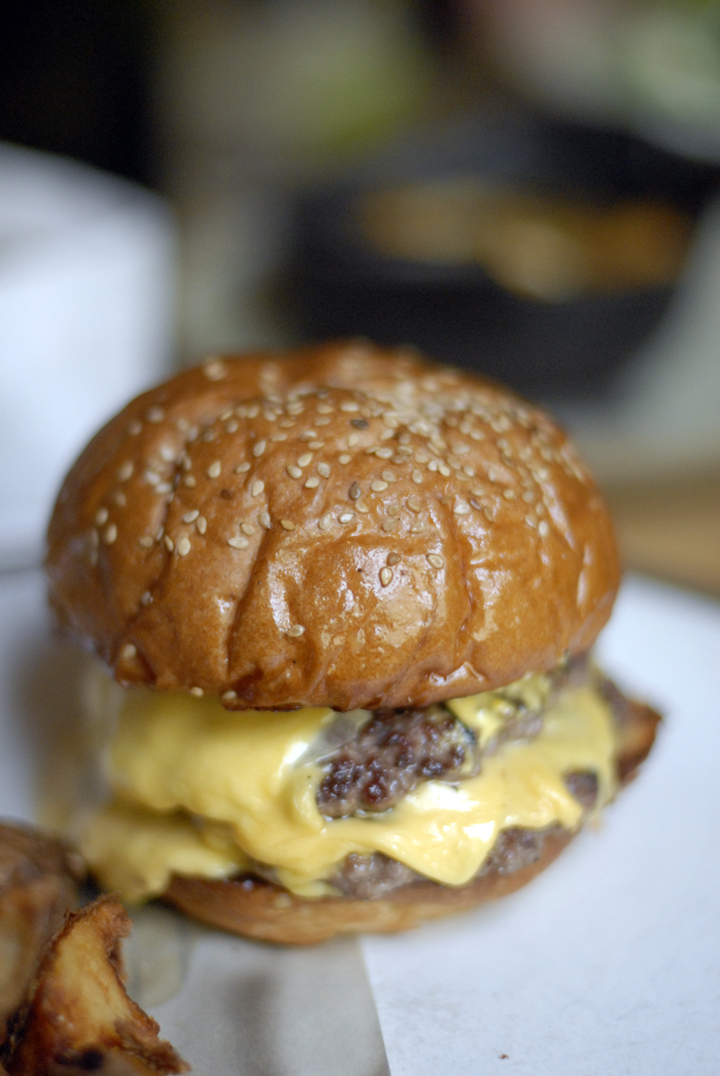
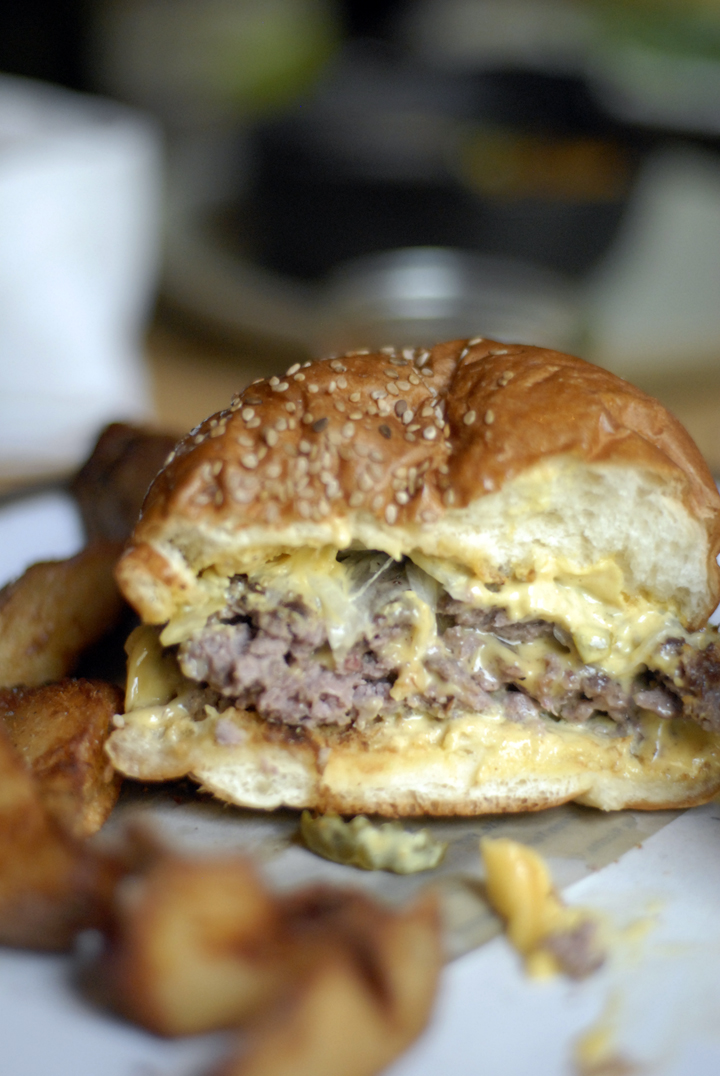 I've been traveling a bit these past few weeks and I'm now in South Carolina. No one goes to Charleston and doesn't eat at Husk, in fact it would be wrong to visit this wonderful city and not visit Husk. But the best thing to eat at this restaurant, in my mind, is nothing fancy, and doesn't require eating at the actual restaurant but only the bar, and that's the burger. The cheeseburger. Order the Husk Cheeseburger with Fried Potato Wedges and a crisp Thai beer. The Cheeseburger is 10 bucks, the beer 7, and then you are set. The cheeseburger has ground smoked bacon put inside it, and then a ton of melted cheese on top and onion. Forget the rest.
I've been traveling a bit these past few weeks and I'm now in South Carolina. No one goes to Charleston and doesn't eat at Husk, in fact it would be wrong to visit this wonderful city and not visit Husk. But the best thing to eat at this restaurant, in my mind, is nothing fancy, and doesn't require eating at the actual restaurant but only the bar, and that's the burger. The cheeseburger. Order the Husk Cheeseburger with Fried Potato Wedges and a crisp Thai beer. The Cheeseburger is 10 bucks, the beer 7, and then you are set. The cheeseburger has ground smoked bacon put inside it, and then a ton of melted cheese on top and onion. Forget the rest.
Husk: 76 Queen St, Charleston. SC. Click here for info.
Notation to the above: Make sure you eat the Warmed Buttermilk Rolls with Unsalted Butter on top before the Cheeseburger arrives, the salty sesame seeded roll are well worth the seat at this packed, sought after little place.
The City Grit Dinner of Hiyaw Gebreyohannes
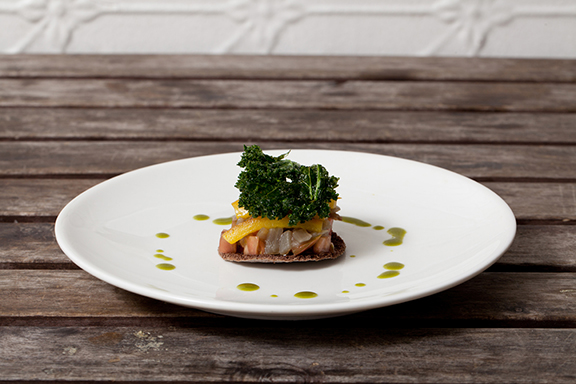 Tim Tim Salad: Heirloom Tomatoes, Kale, Crispy Injera, Roasted Peppers, Jalapeño aioli with Avocado Compote
Tim Tim Salad: Heirloom Tomatoes, Kale, Crispy Injera, Roasted Peppers, Jalapeño aioli with Avocado Compote
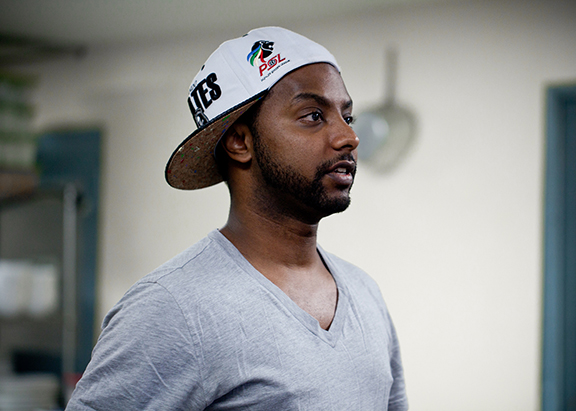 Hiyaw Gebreyohannes who cooked his style of Ethiopian food at City Grit on March 27.
Hiyaw Gebreyohannes who cooked his style of Ethiopian food at City Grit on March 27.
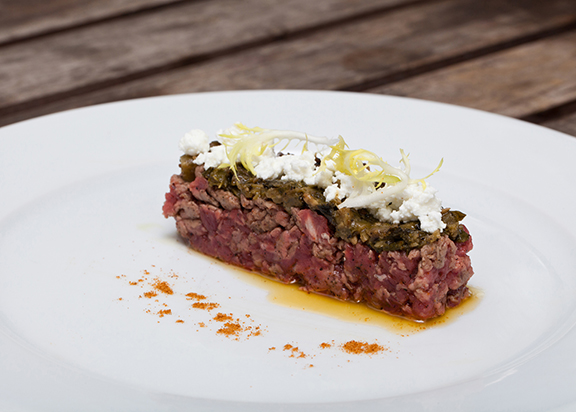 Kitfo: Steak Tartar, Fresh Cottage Cheese, Collard Greens
Kitfo: Steak Tartar, Fresh Cottage Cheese, Collard Greens
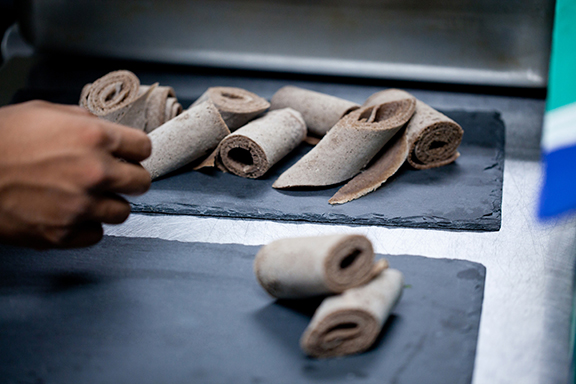 Above: The Injera (is a yeast-risen flatbread with a unique slightly spongy texture, traditionally made out of teff flour, is a national dish in Ethopia and Eritrea.) Below: Plantains and Ginger: Ginger Elixir, Plantains, Honey wine ice Cream
Above: The Injera (is a yeast-risen flatbread with a unique slightly spongy texture, traditionally made out of teff flour, is a national dish in Ethopia and Eritrea.) Below: Plantains and Ginger: Ginger Elixir, Plantains, Honey wine ice Cream
Chef Hiyaw Gebrayohannes doesn’t know if it was a conscious thing to start selling the food he grew up with, but he thinks it was more instinct, probably. The moment of clarity was sitting in his parents restaurant in Michigan and seeing his dad cooking, and his mom trying to convince him to stay in Michigan and run the business and him arguing with them and saying they should “just package the food and sell it like that”, and when he went home that night, he couldn’t get the idea out of his mind. Now Hiyaw runs Taste of Ethopia, which currently has 7 cuisines to go, and if you go to the hot bar at Wholefoods in the North-East region you can pick his food straight up and dine on it at home.
This last week, March 27, Hiyaw cooked at City Grit. City Grit is the brain child of chef, Sarah Simmons and her business partner Jeremie Kittredge, and it’s housed in a phenomenal space—an old school house In Nolita, that’s an antique store by day, and a restaurant by night (guests have been known to purchase the furniture, and lighting fixtures between entree and main). The place features supper-club style dinners, and a guest-chef series of well-known and emerging chefs. This means that the menu gets to change frequently, and organically, and in the larger picture, it gives an opportunity for emerging chef’s to be able to showcase their (maybe, unseen) culinary work.
Photographer Matthew Cylinder went along and photographed Hiyaw a few hours before the event...
---------------------------------------------------
Taste of Ethiopia has currently 7 cuisines you can pick up in New York and eat at home: Misir (spicy red lentils), Kik (Yellow Split Peas), Gomen (Collard Greens), Yatikilt (cabbage and Carrots) Injera (Ethiopian Flat Bread), Dora Wet (Spicy Chicken) and Loze Wet (Peanut Chicken) at Wholefoods, Fairway, Park Slope Food Coop, Westerly market, Union Market Brooklyn, Foragers City Grocer, Brooklyn Fare, and more. And how do they taste? The food is restaurant grade, and it has such a depth of flavor, it’s filling and also reasonably priced. I like to pick up the Misir (really spicy! red lentils), the Kik (Yellow Split Peas) and the Gomen (Collard Greens) and mix them together. Of course Ethiopian food gets obvious comparisons to Indian food because of the similar heat and spices, but this feels a less fatty, but still spicy version of an Indian take-away, and 5 out of the 7 options are vegan! I don’t know of any other dishes of this calibre that you can pick up, sup on for a couple of days, and still feel really good about what you’re eating. I even froze some leftovers and they re-heated up just fine.
---------------------------------------------------
PHOTOGRAPHED BY MATTHEW CYLINDER
Steamed Littleneck Clams with Chorizo
 Turbulent Sea or Angry Ocean; the Nor'easter off of Martha's Vineyard.
Turbulent Sea or Angry Ocean; the Nor'easter off of Martha's Vineyard.
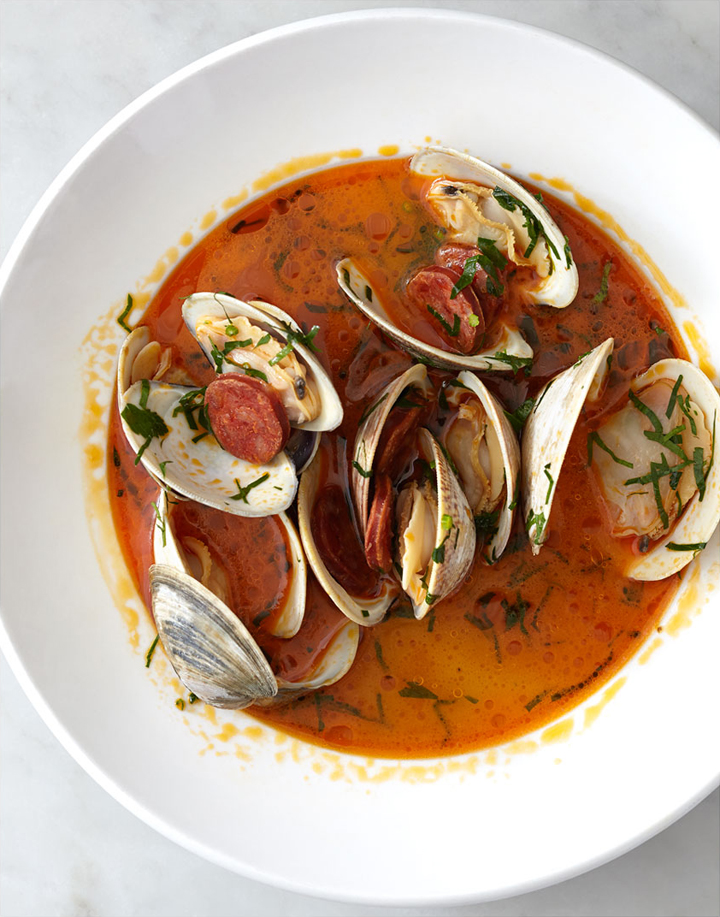 Steamed Littleneck clams w/ Chorizo from Neptune Oyster in Boston, MA. From Chef Michael Serpa.
Steamed Littleneck clams w/ Chorizo from Neptune Oyster in Boston, MA. From Chef Michael Serpa.
 The Historic Old Oak tree is one of the oldest trees on Martha's Vineyard.
The Historic Old Oak tree is one of the oldest trees on Martha's Vineyard.
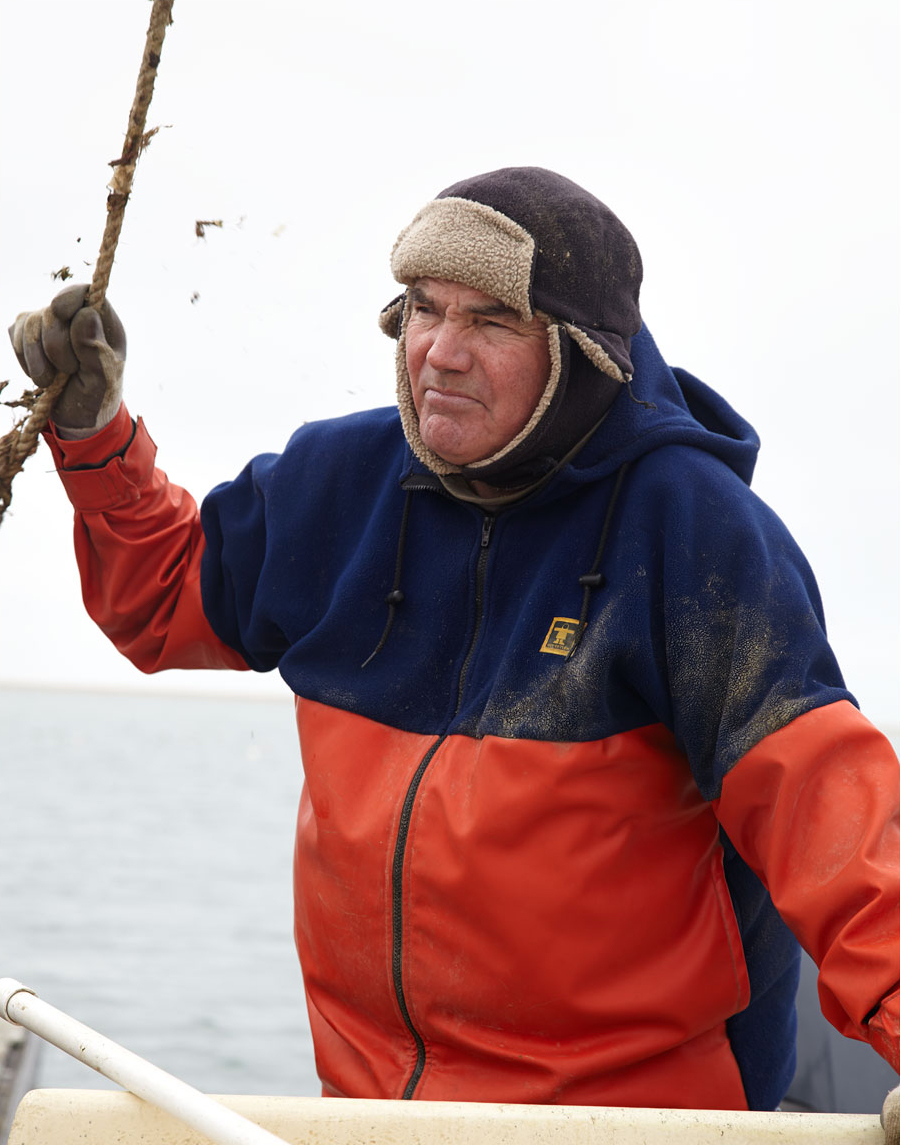 (Above) Oysterman and owner of Sweet Neck Farm, Jack Blake. He runs Sweet Neck Farm with his wife Sue Blake.
(Above) Oysterman and owner of Sweet Neck Farm, Jack Blake. He runs Sweet Neck Farm with his wife Sue Blake.
(Below) Sweet Neck Farm Oysters after being cleaned of their barnacle growth. The oysters are put in a cylindrical cage and then turned to chip away the small amount of the newest growth to the shell. Somewhat like pruning trees, this process helps promote healthy shell growth, and stylize a ideal cup shape. These oyster shells are then put back in their cages, and dropped back into the ocean to continue to grow long after the process.
Justin Walker, photographer, and contributor to my blog, is a beautiful fine art photographer, but he's not slouch in the commercial arena either, having just completed the wildly successful seamless.com food campaign.
Here, he writes about his recent trip to Maine.
They call Jack Blake "The Godfather" in Martha's Vineyard. Fifteen years ago he brought some of the first oysters to Katama Bay, and has since perfected and helped revolutionize one of the newest industries on the sea: farming. Though an oyster needs an estuary to reproduce naturally, they can be grown from seeds on small farms off-shore. "People call all the time trying to sell me farm equipment, and such," says Jack, "...its not what most people are used to calling a farm."
Jack Blake's Sweet Neck Farm produces such a high quality of product that it rarely leaves the island of Martha's Vineyard, with the exception of some of the finest oyster bars up the East Coast. Neptune Oyster in Boston, MA is one of those establishments where Chef Michael Serpa serves up Katama Bay's best. Neptune Oyster works closely with many seafood producers and sources Striped Bass , Monk Fish and Littleneck clams, almost entirely on a local level.
---------------------
-----------------------
Food Porn: The New Food & Wine Cookbook is out.
The new Food and Wine "America's Greatest New Cooks" book is out. And since I'm obsessed with the word 'favorite', I asked one of my 'favorite' photographers Christina Holmes, 5 questions concerning her... well, favorites.
————-
CHRISTINA HOLMES: is a New York based photographer with deep roots in Michigan. When it comes to her favorite foods, her list is long! She will eat anything from Il Buco restaurant, she covets the Mushroom & Egg pizza from ABC Kitchen, loves the pork belly at the Breslin, the olive oil gelato at Otto, the olive oil cake from Abraco, the chocolate chip cookies from City Bakery, and any dessert from Lady M! Her clients include Food & Wine, Bon Appétit, Whole Living, The Cooking Channel, Sweet Paul, Chop’t. Check out her work here.
Pancakes with Warm Maple Syrup & Coffee Butter (Chef Richard Blais)
My patience was gone. I'd been waiting for Richard Blais' first cookbook for what seemed like years, and I'd just about given up hope. In fact I'd retreated, drawn the shades, let the cat get his own beer, cancelled my subscription to the world, and crouched, hidden behind the kitchen door, suspicious at anyone who came to my door, who wasn't the delivery man.
And then it appeared. Like a bright yellow flower blossoming on the long cold walk down a stoney, snowy, path. It came. Clutched under the arm of the delivery man amid the icy, and slippery pools that exist when the dew subsides to a watery melt. One bright dot on this grey, late-February horizon. The Richard Blais book! And it was bigger and more interesting than I could have ever imagined! So darn clever! Richard has outdone himself.
THE SKINNY Reading this cookbook at times feels like you've been privy to a mad professors secret notebook. A print-version of all we loved while watching him on the Top Chef episodes, but unlike the Science classes I remember back in High School, Richard's kind of science, mixed with food, is fun. You can literally hear his brain ticking as you wander through each recipe, like he's plotting it out, step by step, and it's beautiful, and wondrous and original.
Of course there is a whole section on what to do with liquid nitrogen. (Because it's Richard, so what would you expect?) and if we use it, he teases, we'll be able to make ice cream in 5 short minutes, but as soon as he mentions Cryogenic Gloves, and sourcing it from an Industrial Gas Supplier, I'll admit, he kind of lost me. Likewise with the recipes that require a Sous Vide machine. Yes, I would like one of those, for sure, but I remember clearly the waffle machine that is taking up space in my kitchen, that I still haven't used. But that's me.
The book is only part chem lab, though, in fact he shows real restraint in that area by sticking with the conventional method for most of the dishes. There is a side panel to some recipes called 2.0 where he takes the recipe one step further by introducing a new ingredient or a more challenging way to make the recipe. Like the Green Gazpacho, that a home cook will love, and the more adventurist cook can shift up by freezing the top of it with liquid nitrogen, by following the 2.0 version.
His voice throughout is honest and charming; for instance when he provides a Swedish Meatball dish, (it's easy, no sous vide required, nor liquid nitrogen, and you can even sub out the xanthan gum for cornstarch), while acknowledging that after years of thinking he was Swedish, he's not, after all, but rather Norwegian.
While it's hard not to read this book and not feel inspired and awed by his wicked cleverness, (Macaroni and Headcheese, "Everything Bagel" Vinaigrette) there are still things like plain old 'Spaghetti and Meatballs' which make me in some banal way know that Richard Blais is a parent like the rest of us, has the same issues with his kids eating habits and yet loves preparing something so simple yet satisfying.
Yay Richard Blais!
Ok, I need to lie down now. Take a couple of Aspirin, or something. And delivery man you can leave now, thanks, my February is now much brighter.
----------------
PANCAKES with WARM MAPLE SYRUP & COFFEE BUTTER From the new book Try This at Home by Richard Blais. Copyright © 2013 by Richard Blais. Serves 6 (makes about 18 pancakes)
If I entered a competitive-eating contest, it’d be one for pancakes. I like mine crispy edged, yet soft and tender inside. After years of tinkering, I’ve found that the best way to get this texture is to start with a fresh pancake batter, but you don’t even have to make it yourself. (I love the buttermilk-based Robby’s pancake mix available here, or Amazon.) If you can, let the batter sit overnight in the refrigerator to hydrate and swell—that extra time makes for the fluffiest pancakes, I promise you. I love the play of the sweet maple syrup with the creamy, slightly bitter nature of the coffee butter in this recipe.—Richard.
2 cups high-quality store-bought pancake mix (such as Robby’s pancake mix) 1⁄4 cup all-purpose flour 2 cups whole milk 2 large eggs 4 tablespoons unsalted butter, melted 1⁄2 cup brewed coffee 6 tablespoons unsalted butter, softened Pure maple syrup, warmed, for serving Sliced fresh strawberries or blueberries, sprinkled with sugar, for serving
1. In a medium bowl, whisk the pancake mix, flour, milk, eggs, and melted butter together until smooth. Cover the bowl tightly with plastic wrap and refrigerate for at least 2 hours, and as long as overnight.
2. Put the coffee in a small saucepan, bring to a simmer over medium heat, and cook until reduced by about half. Remove from the heat and cool completely.
3. Put 4 tablespoons of the softened butter in a small bowl and whisk in the cooled reduced coffee until completely incorporated. Set aside until ready to serve.
4. Melt 1 tablespoon of the butter on a pancake griddle or heavy skillet over medium-low heat. Add the batter by ¼-cup amounts to make 4- to 5-inch pancakes and cook until bubbles appear on the surface and the bottoms are browned and crisp, 3 to 4 minutes. Flip the pancakes and continue cooking until browned on the bottom, 2 to 3 minutes more. Transfer to a plate in a low oven to keep warm until ready to serve. Continue with the remaining batter, adding the remaining butter as needed.
5. To serve, put 3 warm pancakes on each plate. Top each serving with 1 tablespoon of the coffee butter and some warm syrup, garnish with the fruit, and serve immediately.
2.0 Whipped Maple Syrup Maple syrup is sweet and delicious, but I give it more textural interest by using Versawhip, a soy protein. It’s one of the cooler so-called “molecular” ingredients that chefs play with; it’s probably no coincidence it’s also one of the most forgiving and easy to use. It aerates maple syrup until it’s the consistency of whipped cream, without using any cream. Versawhip is available from the manufacturer WillPowder (WillPowder.net); the online gourmet retailer L’Epicerie (Lepicerie.com); and Amazon.
To make whipped maple syrup, put 1 cup of pure maple syrup and 2 teaspoons Versawhip in the bowl of a standing mixer fitted with the whisk attachment. Mix on low speed until dissolved, then increase the speed to medium-high and whip until the syrup holds soft peaks. The whipped syrup can be held at room temperature for up to 1 hour.
Makes about 3 cups
-----------------------
Reprinted from the book Try This at Home by Richard Blais. Copyright © 2013 by Richard Blais. Photographs copyright © 2013 by John Lee. Published by Clarkson Potter, a division of Random House, Inc.
To purchase this book, click here
Ecuadorian Chicken Stew
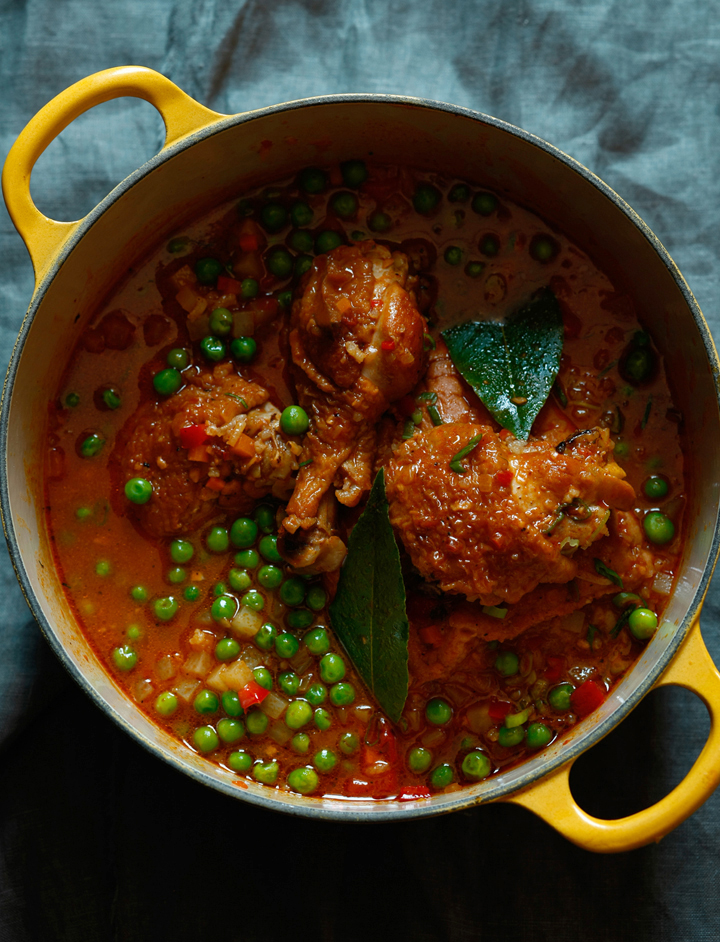 The wind was howling and soft snowflakes were swirling from the sky when I arrived at the Jersey Shore last night to cook dinner at a friend's new beach house. They'd just purchased the place, so understandably they hadn't used the stove before, nor knew how the oven worked. The kitchen utensils, left in the mad dash by the previous owners were somewhat limited but after a small search we found a large skillet, and with another shallow pan, made a makeshift 'lid'. Paper plates acted as a cutting board, and without a can opener, we pried open the tomato paste with a pair of industrial pliars. Luckily I'd bought most of the ingredients with me from New York, as a quick whip around in the car last minute, would only glean us a can of watery peas and a dusty box of 'boiled rice in a bag'. Unfortunately the major supermarket is still closed there, shuttered sadly since Hurricane Sandy.
The wind was howling and soft snowflakes were swirling from the sky when I arrived at the Jersey Shore last night to cook dinner at a friend's new beach house. They'd just purchased the place, so understandably they hadn't used the stove before, nor knew how the oven worked. The kitchen utensils, left in the mad dash by the previous owners were somewhat limited but after a small search we found a large skillet, and with another shallow pan, made a makeshift 'lid'. Paper plates acted as a cutting board, and without a can opener, we pried open the tomato paste with a pair of industrial pliars. Luckily I'd bought most of the ingredients with me from New York, as a quick whip around in the car last minute, would only glean us a can of watery peas and a dusty box of 'boiled rice in a bag'. Unfortunately the major supermarket is still closed there, shuttered sadly since Hurricane Sandy.
I decided to cook everyone Ecuadorian Chicken Stew, inspired from the recipe from Jose Garces' cookbook, The Latin Road Home. Jose's stew is intensely flavored and an easy weeknight option. After browning the chicken pieces you literally pop all the diced-up ingredients in the pan, and let it simmer for 40 minutes. The strength of the dish comes from the combination of Achiote Paste + Smoked Paprika, which gives a deep, slightly-smokey flavor that's not at all spicy, so it's ideal for a possibly-fickle crowd. As one guest said "It's so comforting, almost like an Latin Chicken Cacciatore."
-------------------
ECUADORIAN CHICKEN STEW Adapted from Chef Jose Garces recipe for Chicken and Rice Soup with Achiote (Aguado de Gallina) from his wonderful book "The Latin Road Home".
Season 3lb's of bone-in, skin-on chicken thighs and legs. Heat Vegetable Oil in a heavy cast iron skillet or Dutch Oven (that has a lid) and gently brown chicken till golden. Set aside. Turn the heat down to medium-low and add 1 chopped Spanish (Red) Onion, 5 or 6 minced cloves of Garlic and 1 diced Red Bell Pepper. Cook, stirring, until translucent. Add 1 tablespoon of ground Cumin, and 2 big heaped tablespoons of Achiote Paste and 2 big heaped tablespoons of Tomato Paste and 1 teaspoon of Smoked Spanish Paprika and cook, stirring for 3-5 minutes. Return chicken to the pan, and add 1 quart of Chicken Stock (or more if you like a soupier stew) and 2 fresh bay leaves and bring to a low boil over medium heat. Stir in 3 diced Plum tomatoes, 1 cup of Long-grain Rice, 3 large Russet Potatoes, peeled and cut into a small dice and 1 large Carrot, also peeled and cut into a small dice. Cook, uncovered until the stock begins to reduce and the dish begins to thicken. Then add the lid back on, and cook until the chicken is tender and falling off the bone and the rice and potatoes are cooked through. (About 30-40 minutes). Stir in 1 cup of frozen peas, a small handful of roughly chopped Flat-leaf Parsley, a small handful of fresh Cilantro and season to taste with Salt and Pepper.
-------------------
Notes:
Achiote Paste (Recado rojo) is crucial to this dish. Achiote is a Mexican spice blend of Annatto seeds, All spice, Garlic, Oregano, Cloves, Cumin, Cinnamon and Salt, and will give the dish flavor, as well as a rich mahogany hue. It's available at any Mexican grocery store. In New York I found it at Kalustyan's. Click here to get directions and store opening times.
To make your own Achiote Paste, click here.
Because the dish has peas, potatoes and carrot already in it, we saved time and money by skipping side dishes and just served our chicken stew with plain boiled rice. You could also serve it with grains, or even pasta. We drank a nice Spanish Grenache with it, and as you would expect, the stew tasted even better heated up the next day.
--------------------
Photograph by Jason Varney Prop Styling: Heather Chontos
Photograph ©Jason Varney from Jose Garces cookbook "The Latin Road Home" To purchase this book, which contains the original version of this recipe as well as other great weeknight options, click here.
Make Your Own: Nut Milk
 New York based fashion stylist and writer Jennifer Smith decided to give up cow's milk some years ago when I doctor suggested she 'lay off the dairy'. Not a huge fan of black coffee, Jen's daily dilemma was how to get that milky taste she craved in her morning cup o' joe, but without using regular milk.
On a recent visit to Jen's cute, 6th floor walk-up apartment in the East Village, she talked me through the steps of making her daily nut milk. Jen uses it in any place she would ordinarily use milk, and finds it quick and easy to do.
New York based fashion stylist and writer Jennifer Smith decided to give up cow's milk some years ago when I doctor suggested she 'lay off the dairy'. Not a huge fan of black coffee, Jen's daily dilemma was how to get that milky taste she craved in her morning cup o' joe, but without using regular milk.
On a recent visit to Jen's cute, 6th floor walk-up apartment in the East Village, she talked me through the steps of making her daily nut milk. Jen uses it in any place she would ordinarily use milk, and finds it quick and easy to do.
JENNIFER SMITH'S NUT MILK Jennifer Smith uses a variety of nuts for her 'milk' based on what she can source at the time. At any given time she has used raw almonds, cashews, macadamia, brazil, walnuts and hazelnuts (seen above) for this recipe. Not pecans, though, as Jen says they will make the milk bitter.
Take a 1 Quart Mason Jar and fill half (2 cups) with raw hazelnuts (skin on, or off the hazelnuts, it doesn't matter). Cover with water and soak the nuts overnight, or for 8 hours. This softens the nuts making them easier to grind in the blender, but it also allows them to possibly germinate, making them a living food which is supposedly a health benefit. Put the soaked 2 cups of nuts in the blender. Add 2 cups of water. (Jen likes a 1:1 ratio of nuts to water, because it makes for a creamier 'milk'. If you like a lighter milk, add more water to taste.) Add to the blender 1 tablespoon of Coconut Oil, a splash of Vanilla Essence, and a pinch of Nutmeg, or Cinnamon and Salt (optional). Blend. Strain through a fine mesh strainer nut bag. Wring to release liquid. Store in the fridge. Jen likes to drink her milk the first 2 days. Wash and dry bag ready to use again.
-------------------
What to do with nut 'milk'? You can use the milk wherever you would use regular milk. It makes a delicious hot chocolate. For a savory dish, Jen sauté's some mushrooms with onion, some cut up chicken, and herbes de provence and then stirs in a little almond milk and some fresh ground pepper to make a nice gravy. (A perfect fix for those who are trying to avoid dairy but still crave a creamy taste).
What to do with the leftover nut 'pulp'? After you've squeezed out the milk you will be left with a lot 'pulp'. Check out this cool tumblr site that has a collection of recipes that includes cookies, whole-wheat berry muffins, and even an avocado, almond and sun-dried tomato spread. Click here.
Also here, you could also use leftover pulp to make your own Pistachio Almond Biscotti.
Need a nut bag? Jen recommends this one from Etsy, it's undyed, unbleached, and 100 percent organic, so that you know there's nothing other than nuts going into your milk. Click here.
Almonds: If you are going to make your own milk, why not take the opportunity to make it as healthy as you can. The best nuts to use are non irradiated, non-pastuerized. You can find raw almonds at WholeFoods and Trader Joe's, or a regular supermarket, but if you want to be completely pure, you can try a place like Organic Pastures. Which has non-pasturized almonds. Click here.
Coconut Oil: Jen prefers raw, unprocessed coconut oil. She buys the Organic Virgin Coconut Oil from Trader Joe's. Click here.
------------------
JENNIFER SMITH: is a New York-based fashion editor, stylist, writer and consultant for a number of online magazines and shopping sites. She is also the ex-Fashion Director at the now defunct "Cookie" magazine (RIP). She is an obsessed researcher in the worlds of fashion, beauty, interiors and photography and adores cake, especially layer cake. She loves spice cake with vanilla frosting straight out of the Duncan Hines cake mix box, or a homemade Betty Butter cake from an old Betty Crocker cookbook with chocolate frosting. Jennifer's grandfather owned a bakery in Tucson, Arizona, so she was weaned early on hand-baked products. Her mom and aunts would pile the family into the car and drive downtown to the bakery where they would position the kids on the steps behind the screen door and hand each one of them a hot glazed doughnut fresh out of the oven, which of course they devoured. To this day, Jen concedes that there is nothing like the smell of an old-fashioned bakery. Jennifer's grandmother, who is from Mexico, would make the family homemade tortillas. She would line up flour balls on the counter like little soldiers, and then pat them out and cook them on a huge, thin, cast iron griddle her father made for her. They also had homemade tacos every Saturday night growing up, without fail. Check out Jennifer's beautiful work here.
Short Rib Banh Mi with Quick Pickles and Fresh Herbs & Ice-Cream Bonbon Pops
I love the beautiful shots from photographer Line Klein in the latest (February) issue of Food and wine magazine.
Photo editor Sara Parks, (ex Martha Stewart alum) is an expert in searching and finding great new photo talent, and she discovered Danish Photographer Line Klein via Pinterest, of all places! "I followed a beautiful picture that someone had pinned to her site, and immediately hired her to work on the latest issue." Says Parks, "I have been finding lots of new talent lately on Pinterest and Instagram, but she's my favorite find, by far."
Parks, who's first job was in the style department at Martha Stewart Weddings, switched over to the photo side of things after she got her feet wet on a huge Larry Fink shoot and decided that's where she wanted to be.
Parks hired Klein to photograph Food and Wine's new Handbook section in the magazine. "I was drawn to the richness of her work. Her photo's are very clean, and pared down, but then they have great saturated colors which elevate them up."
Line Klein who is a Copenhagen-based photographer shoots lifestyle, portraits and food, including food dishes for NOMA lab. (NOMA being the 2 Michelin starred restaurant run by chef René Redzepi, which has also been cited as, you know, the best restaurant in the entire world, several times.)
"The shoot went really well," said Parks, "she nailed what we were looking for: delicious, warm-looking food. Line is very hands-on with props, as she styles most of her photo shoots back in Denmark by herself, so we loved that she bought that to the shoot."
The current issue of Food and Wine containing Line Klein's photographs is on newsstands now.
-----------------
To get the recipe for the Ice-Cream Bonbon Pops, pictured above, click here. To get the recipe for Short Rib Banh Mi with Quick Pickles and Fresh Herbs, pictured at top, click here.
To check out Line Klein's work, click here. To subscribe to Food and Wine magazine, click here.


